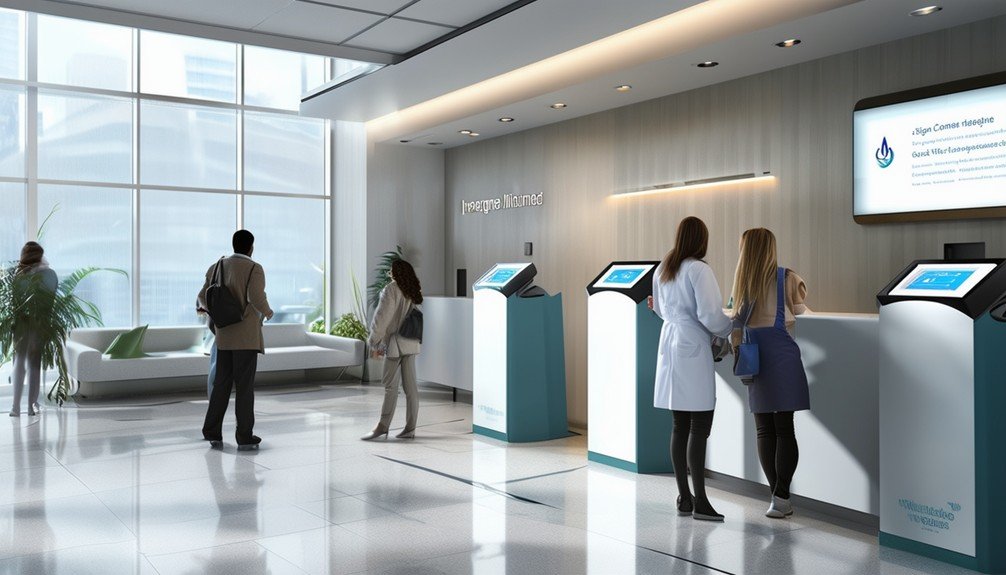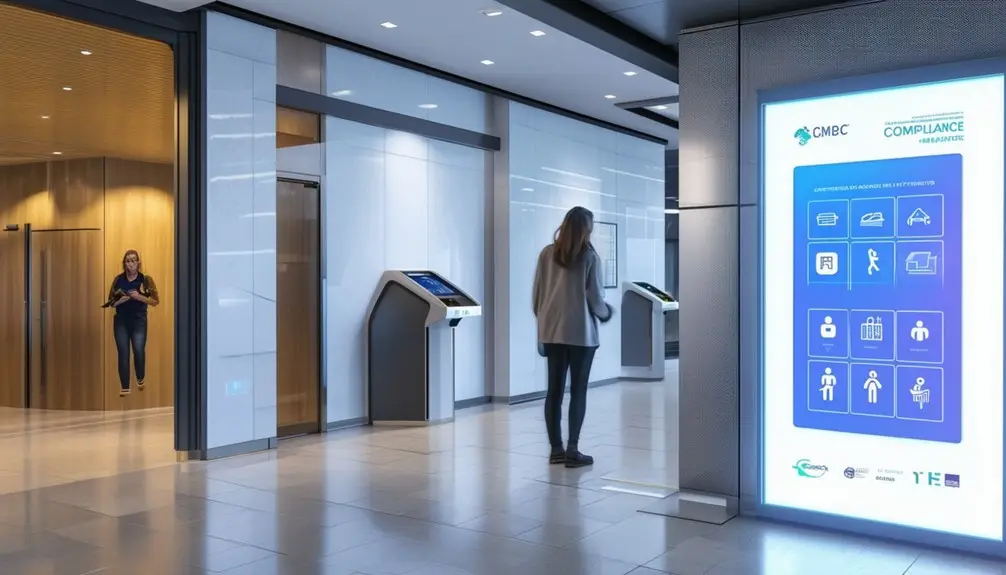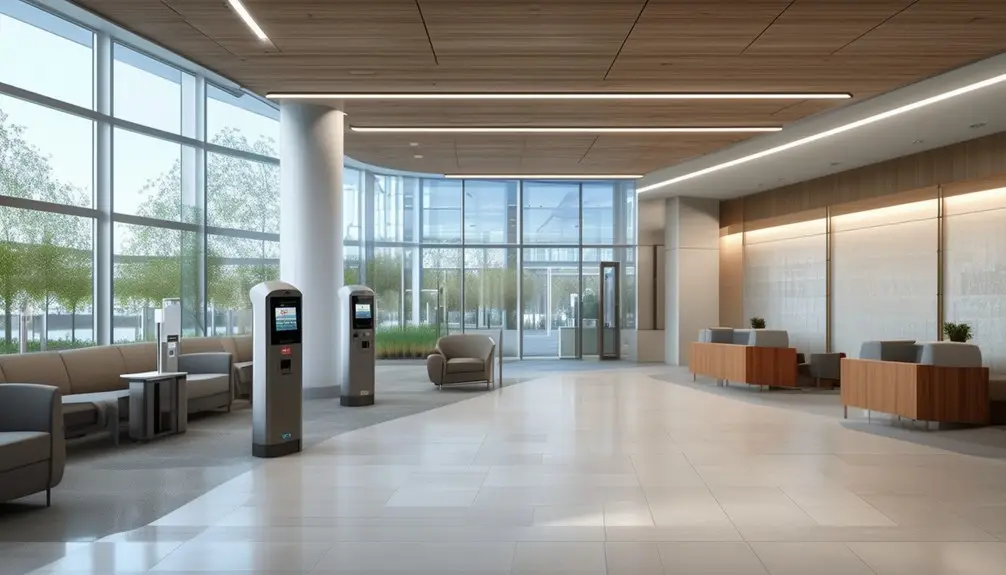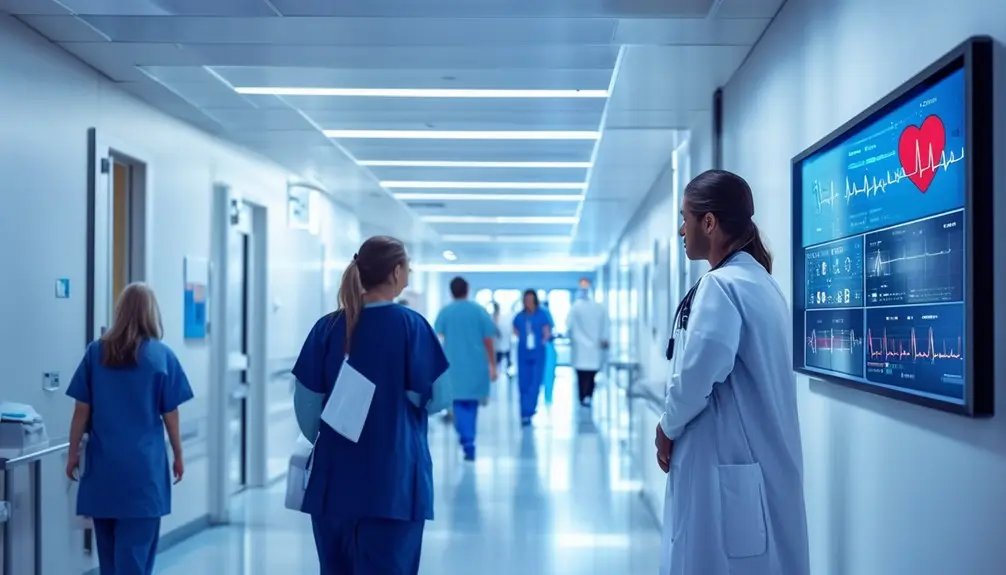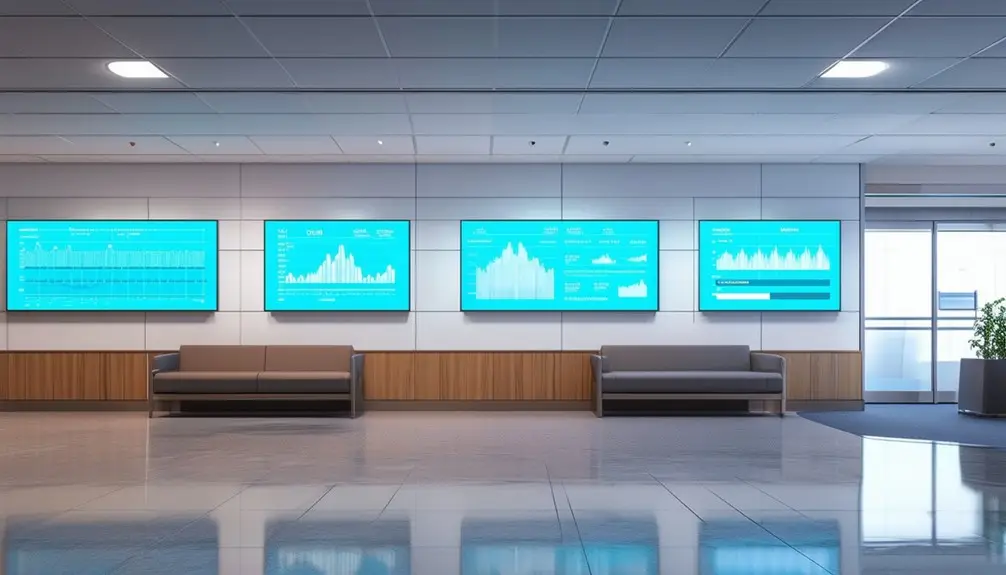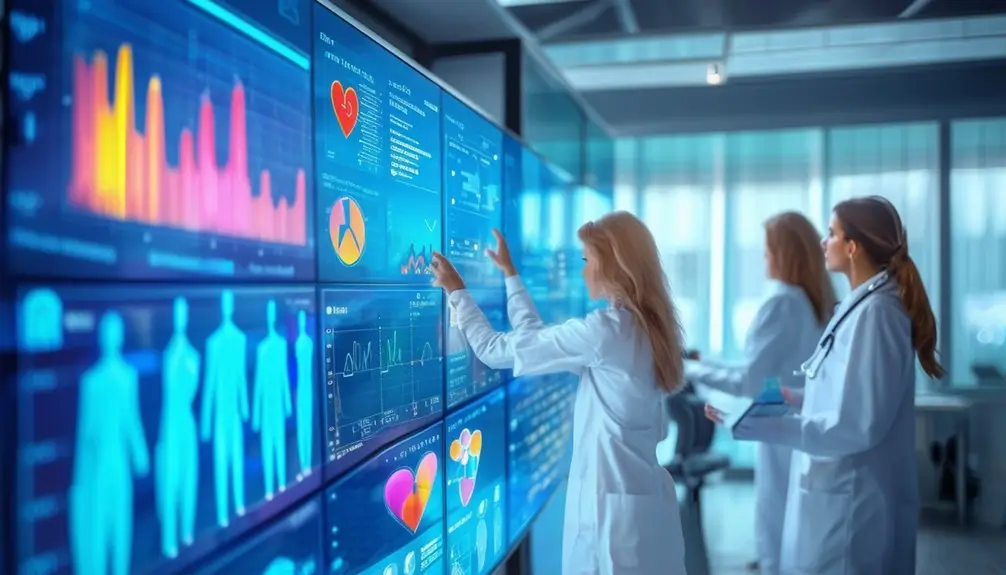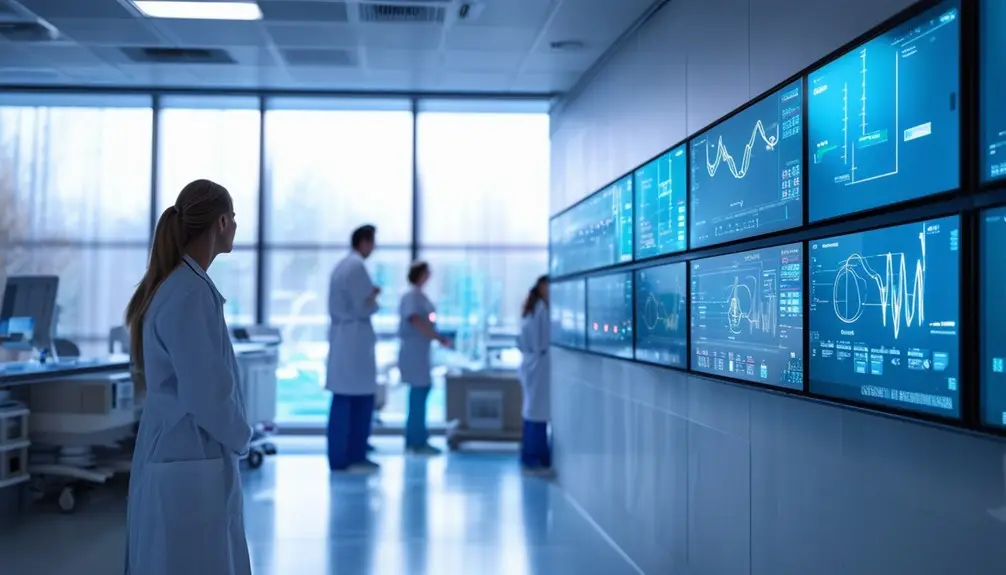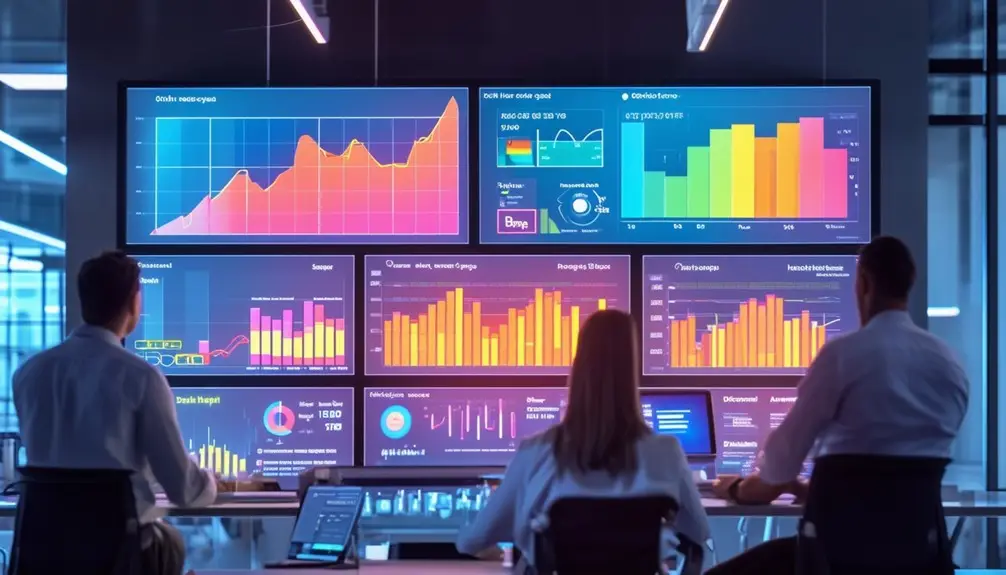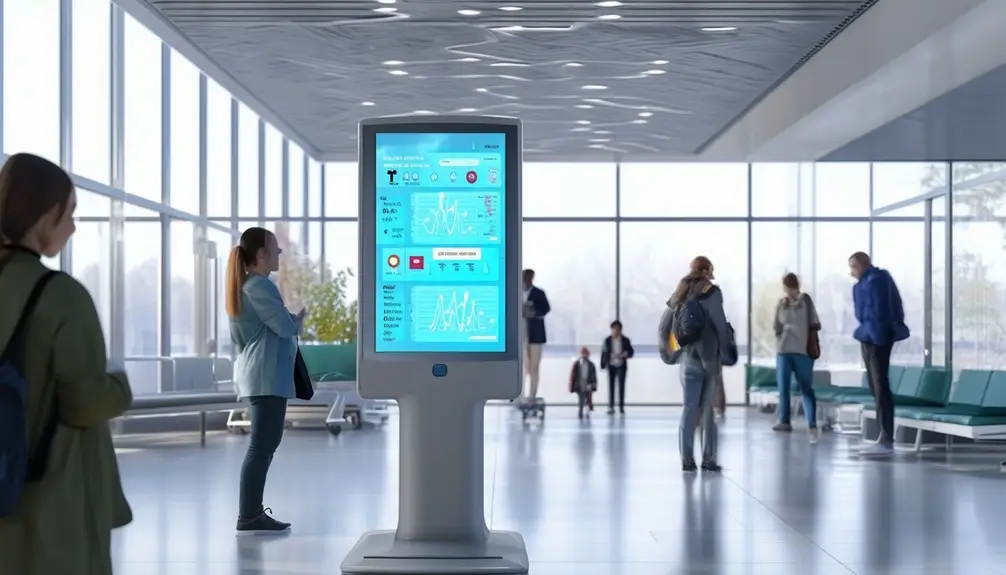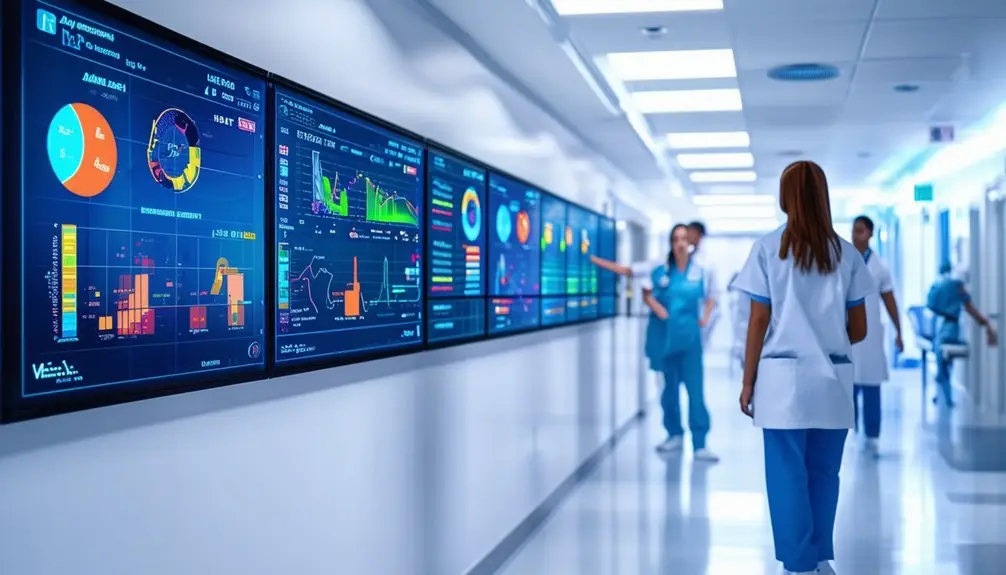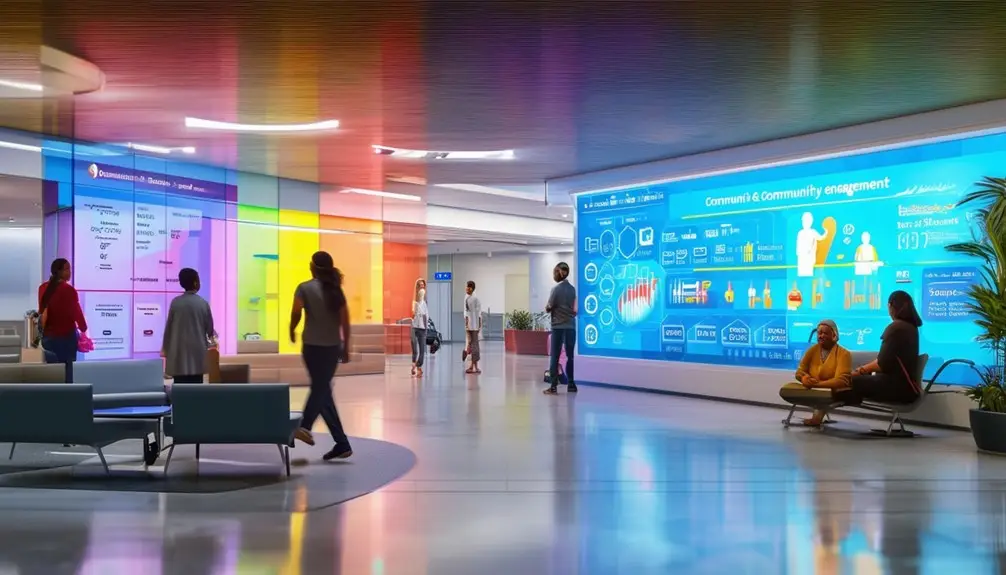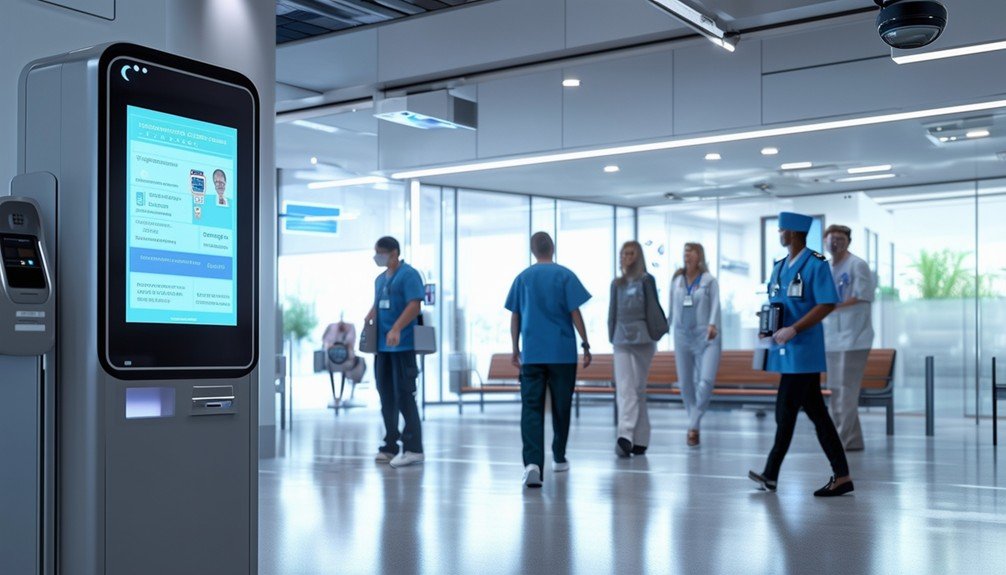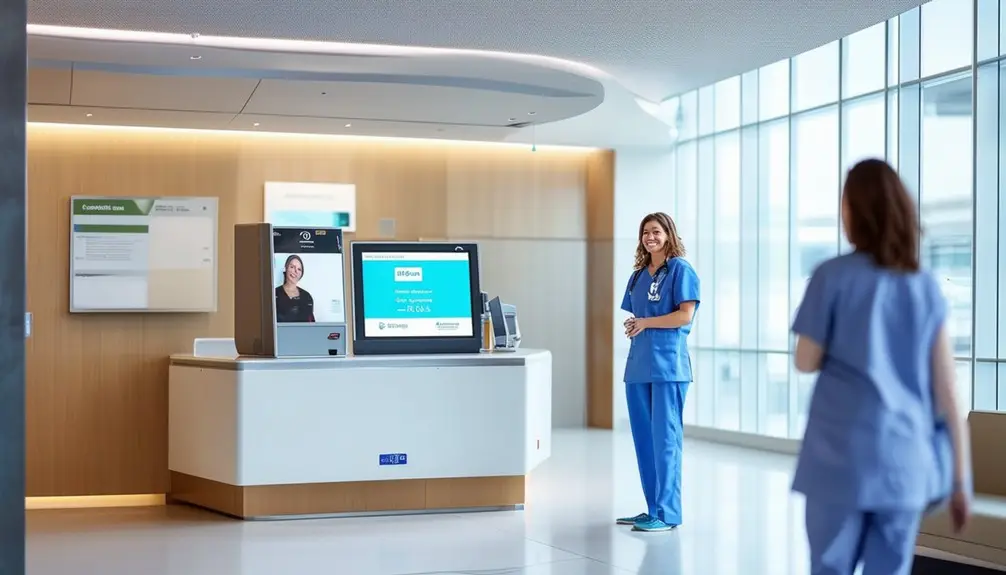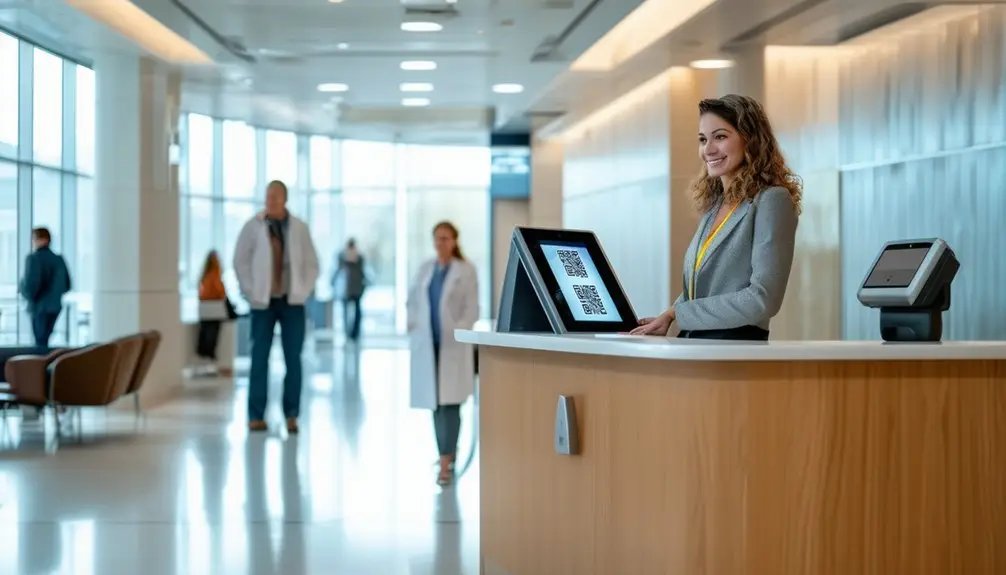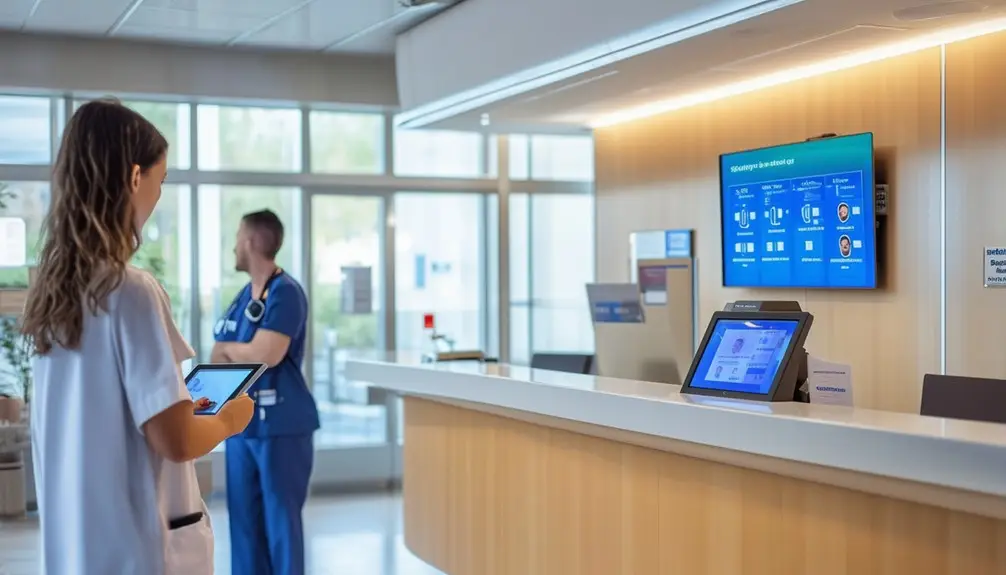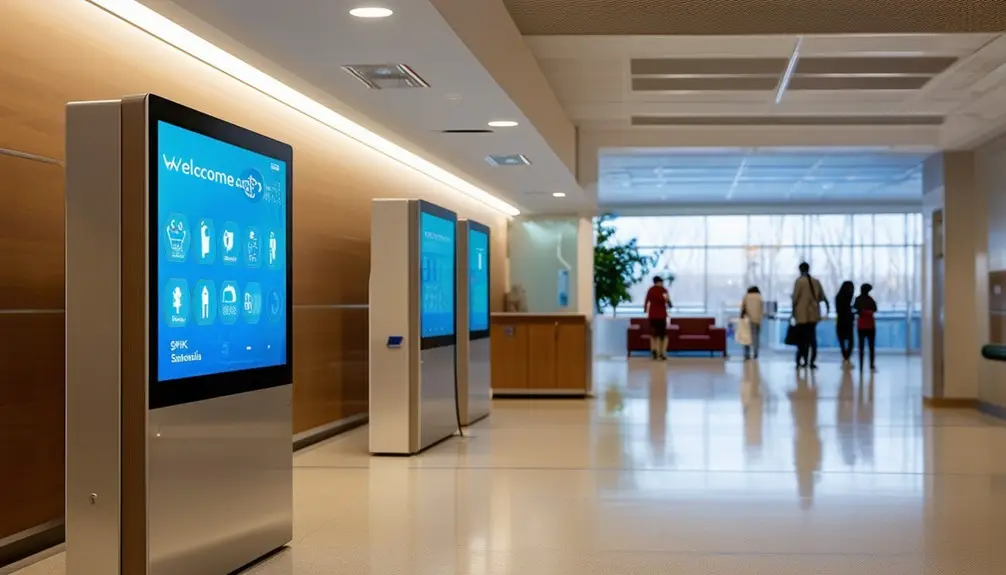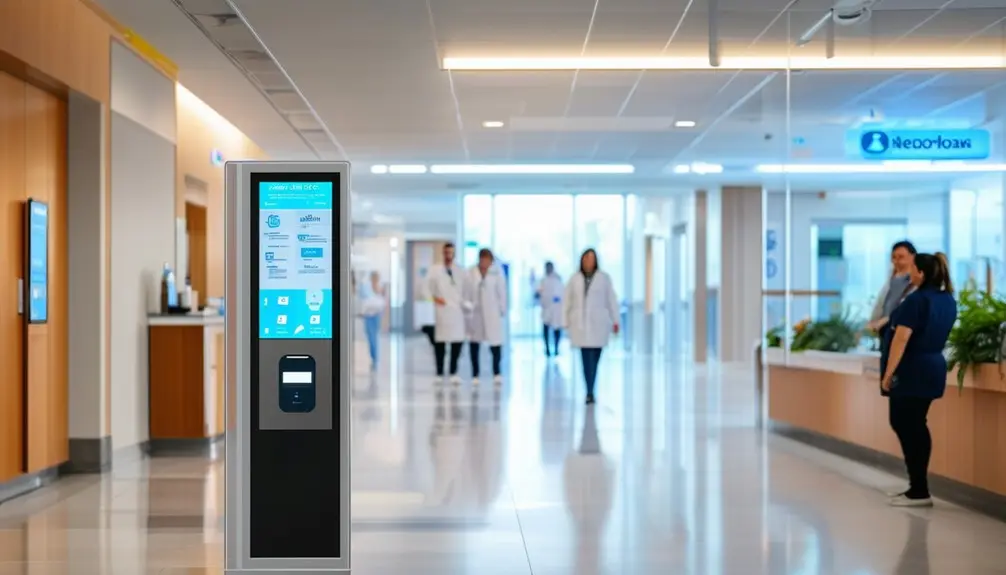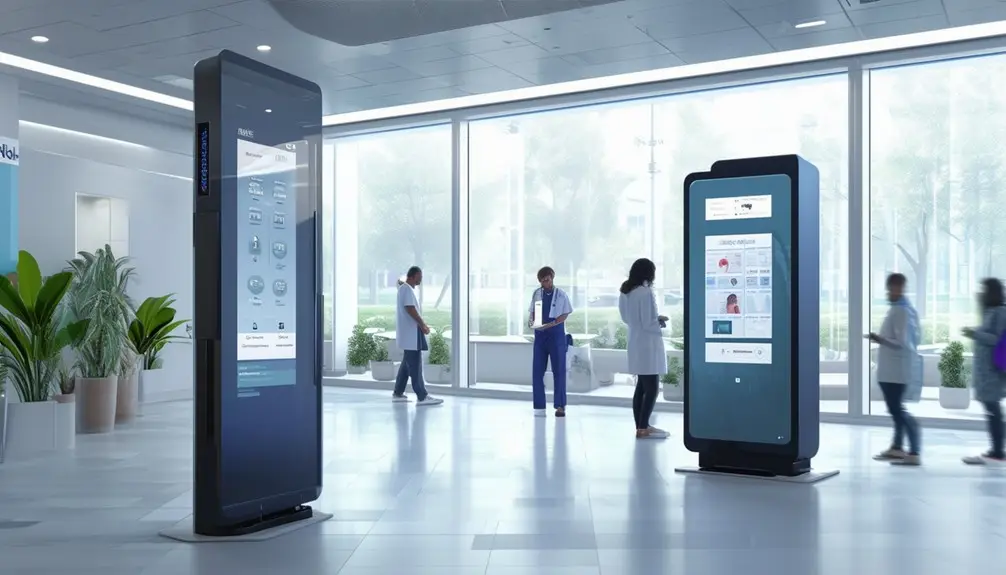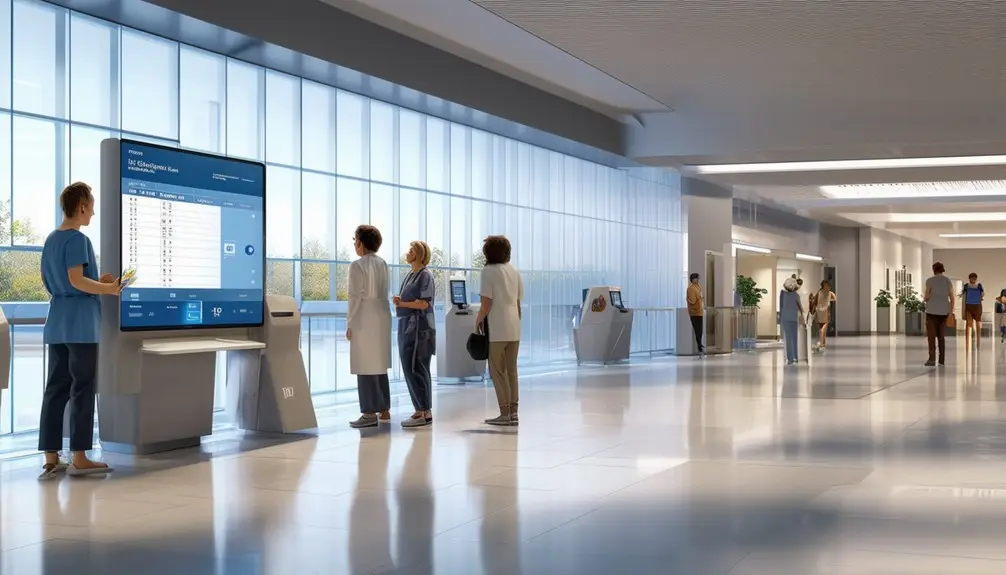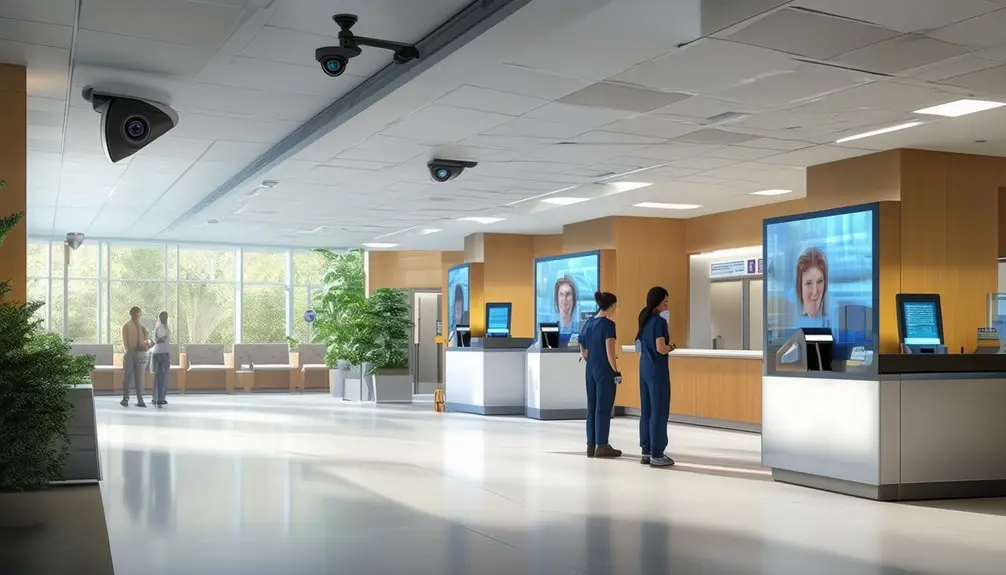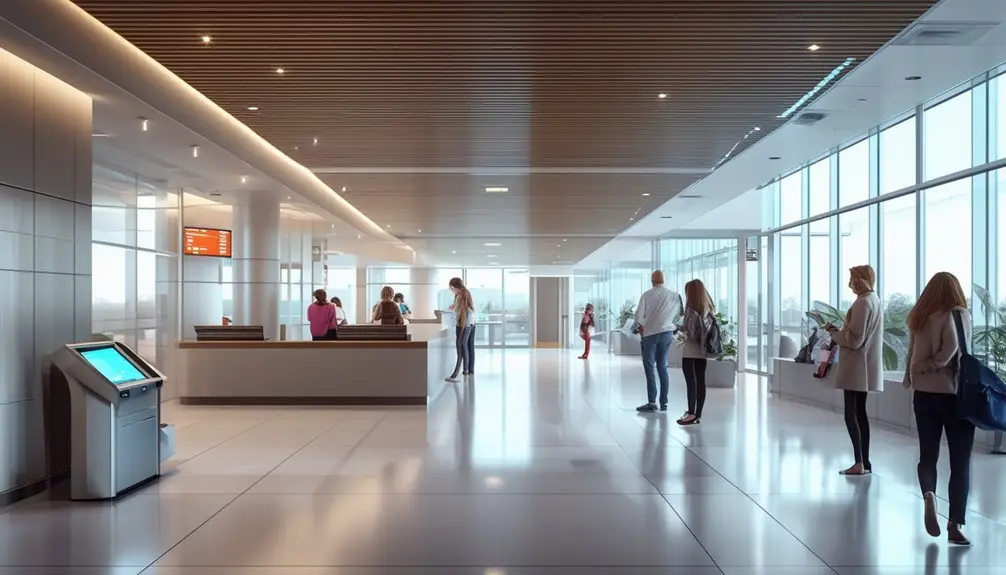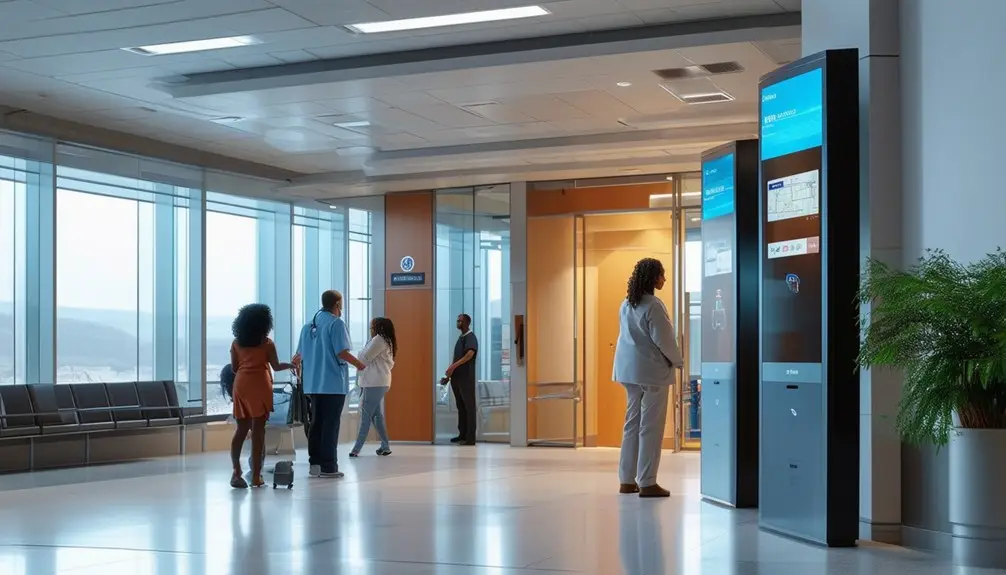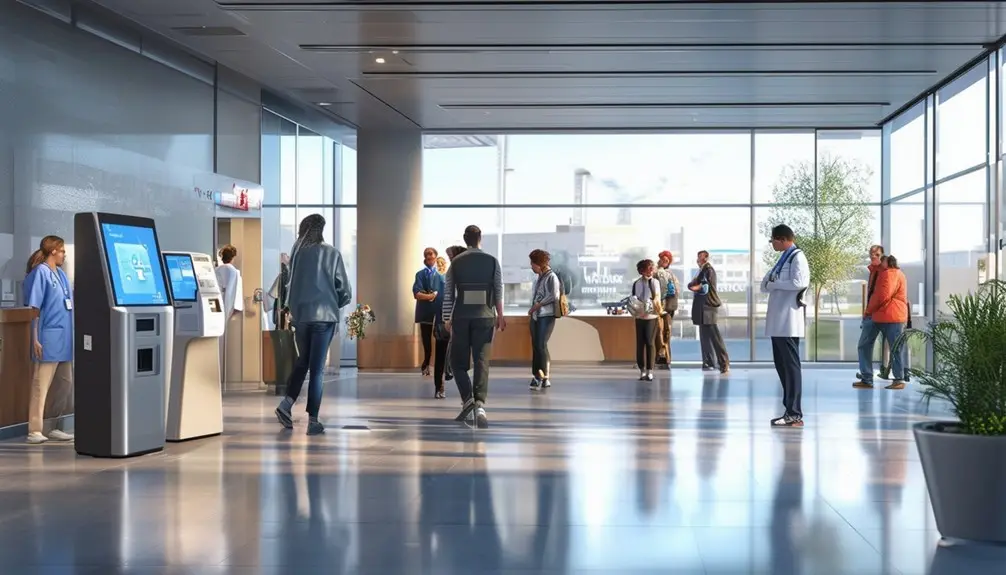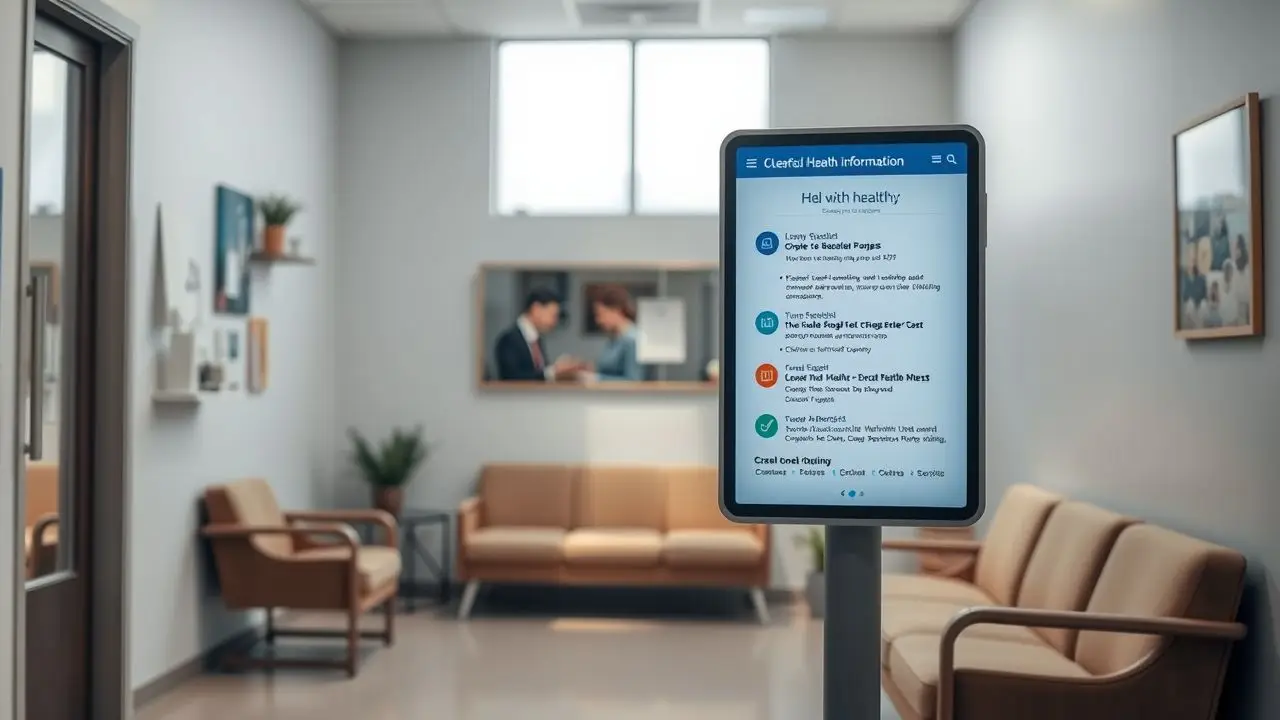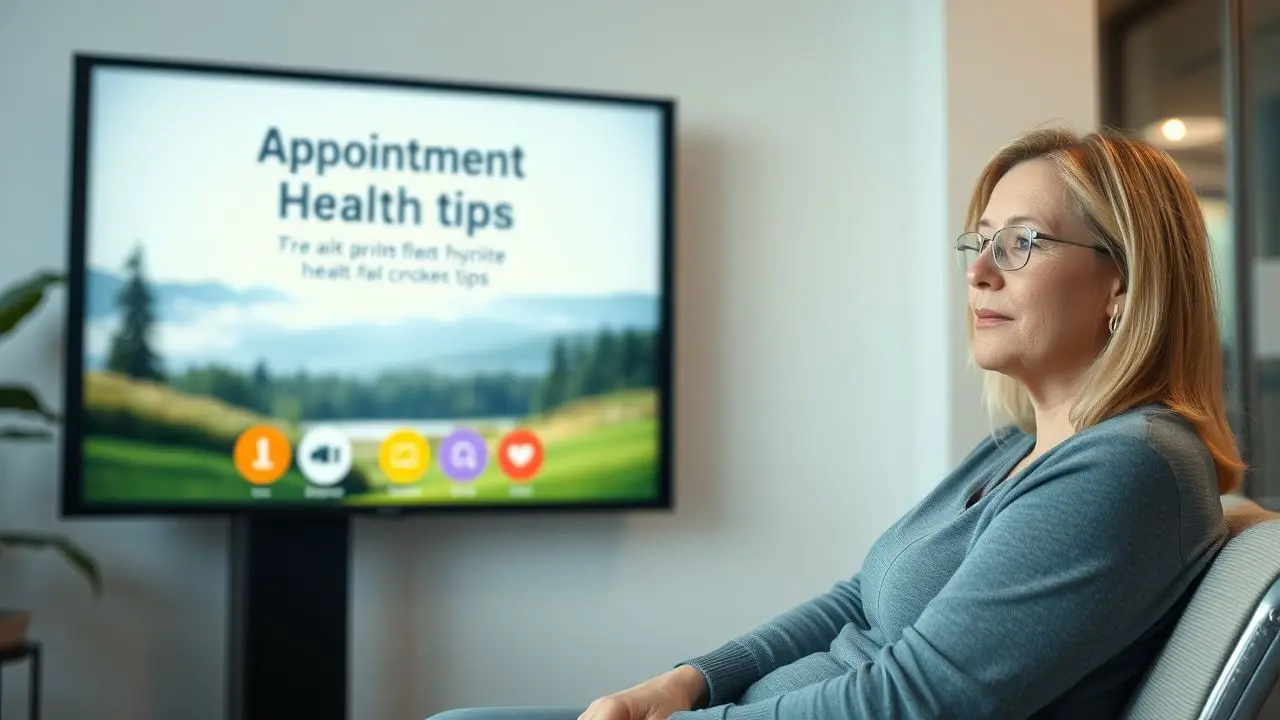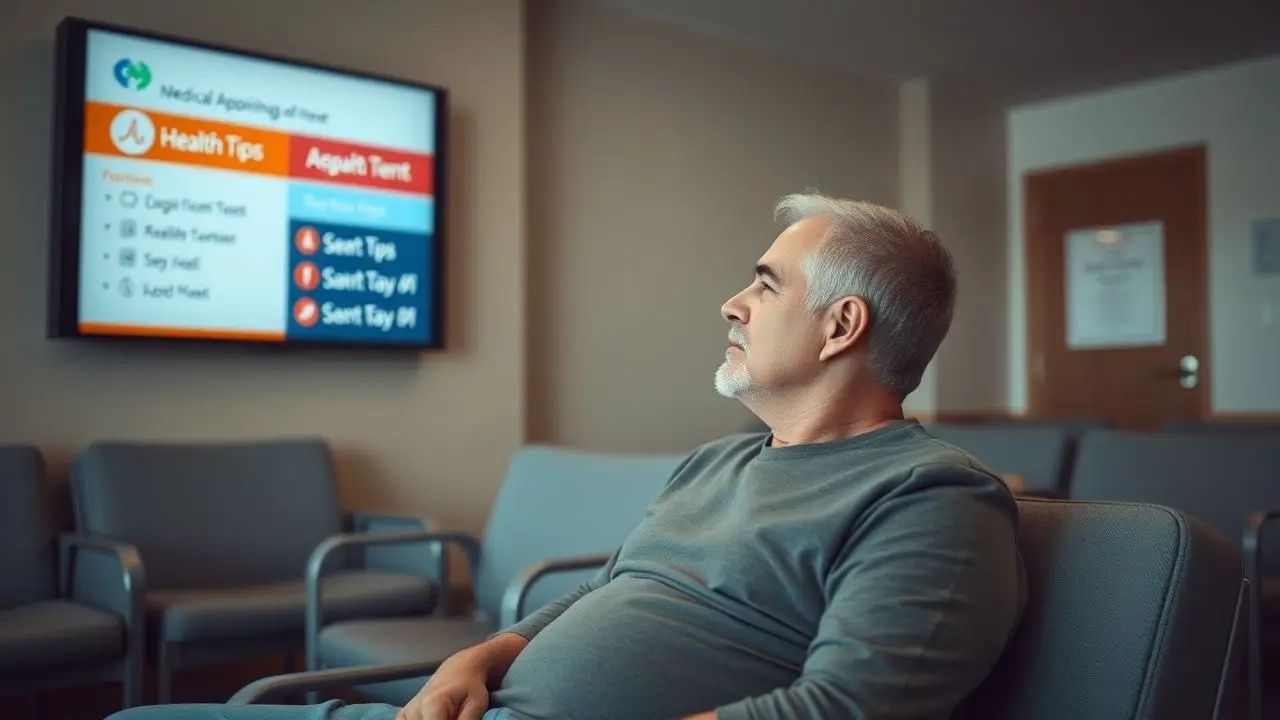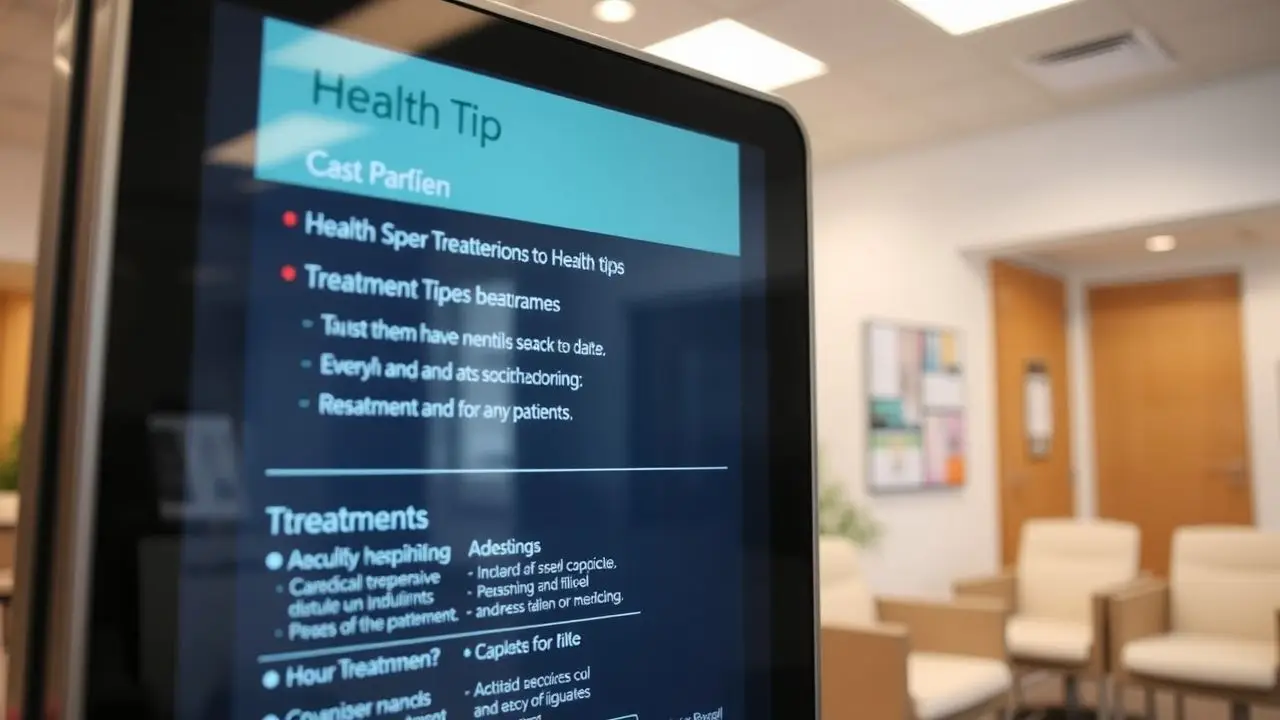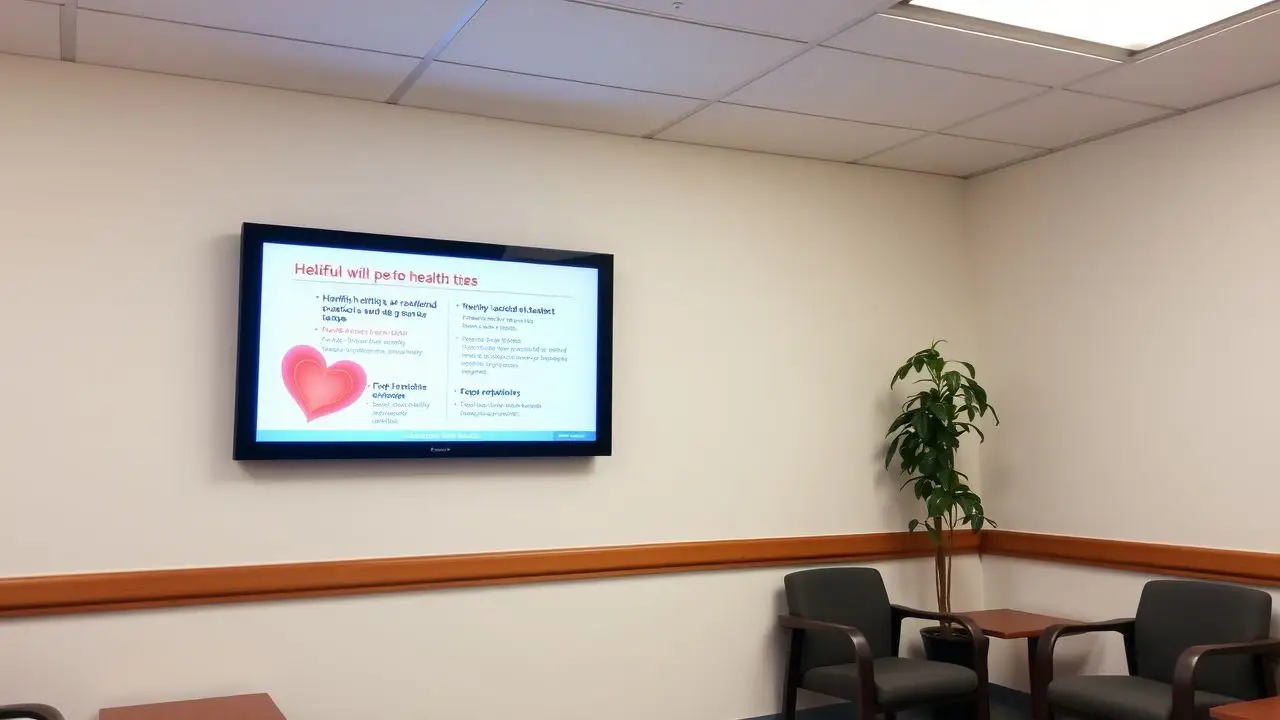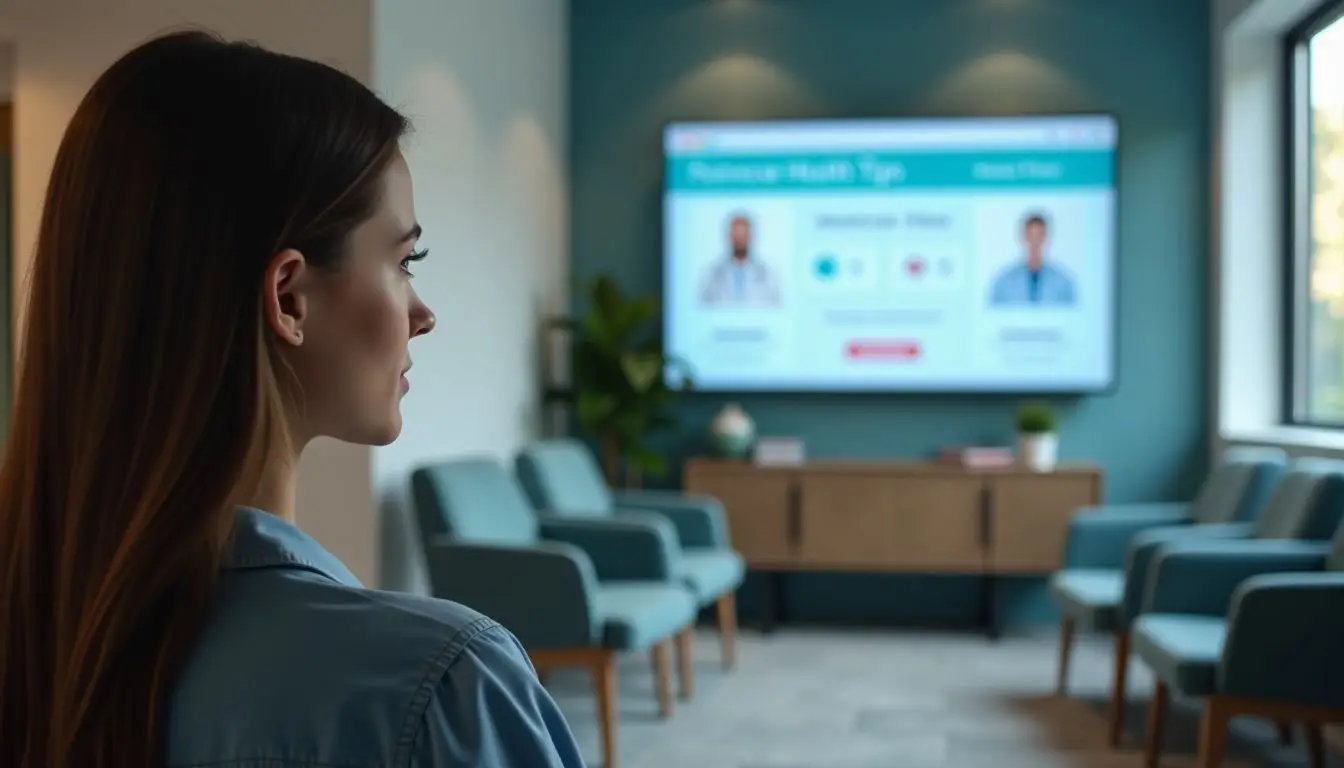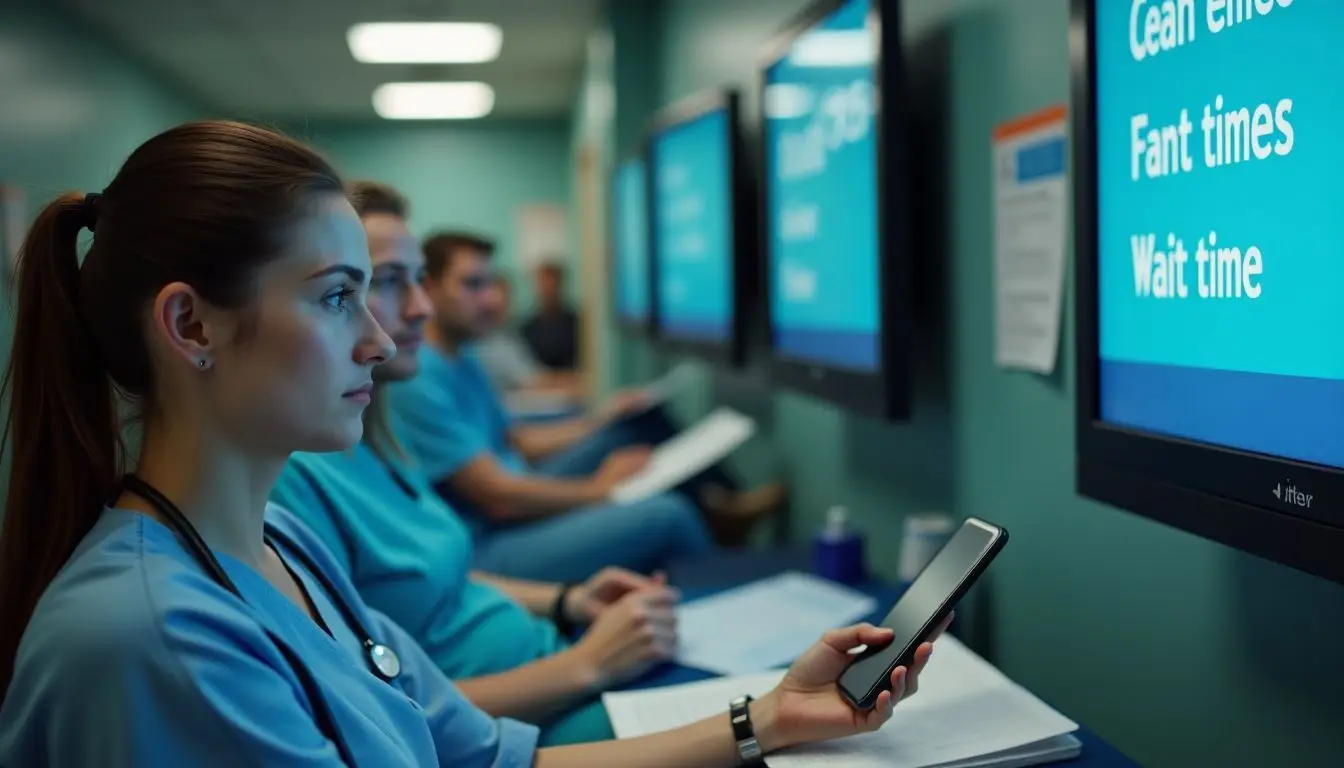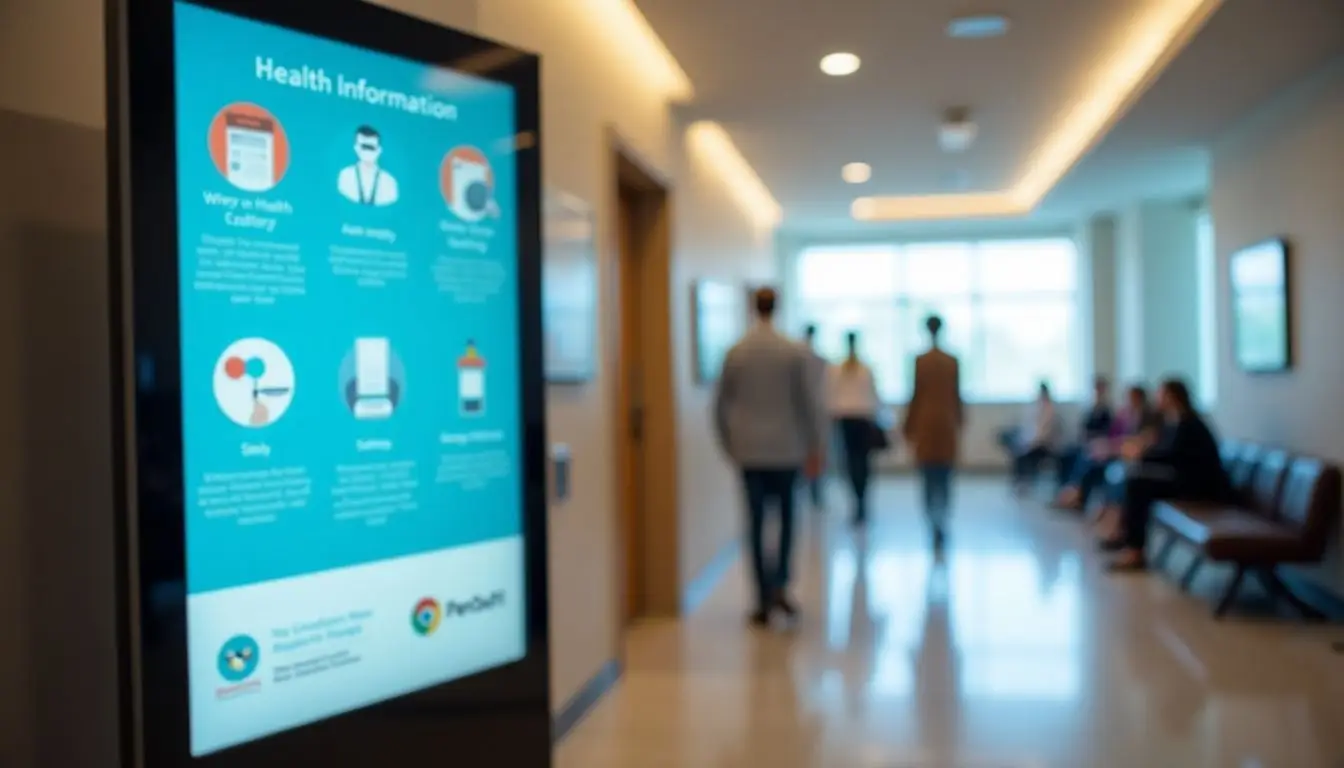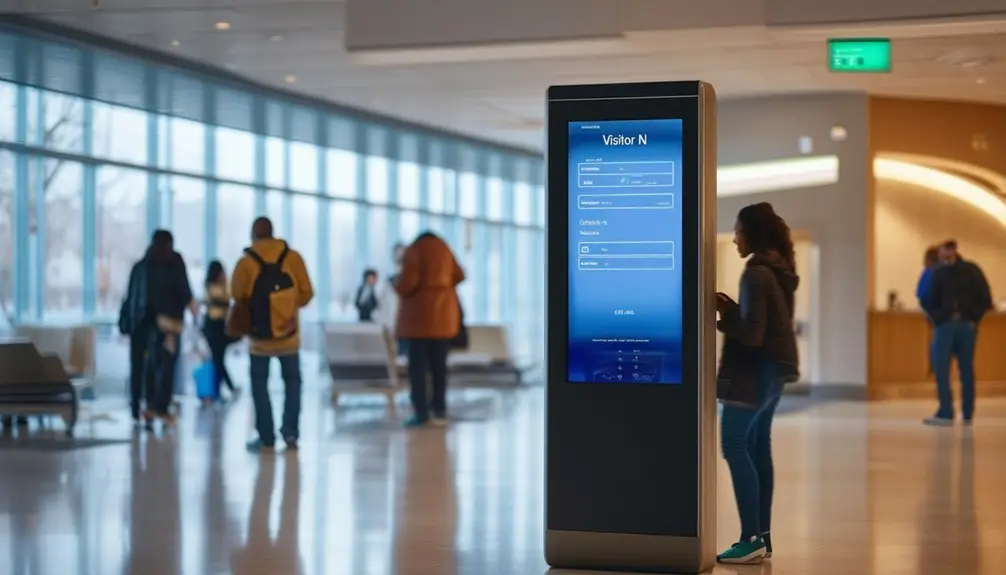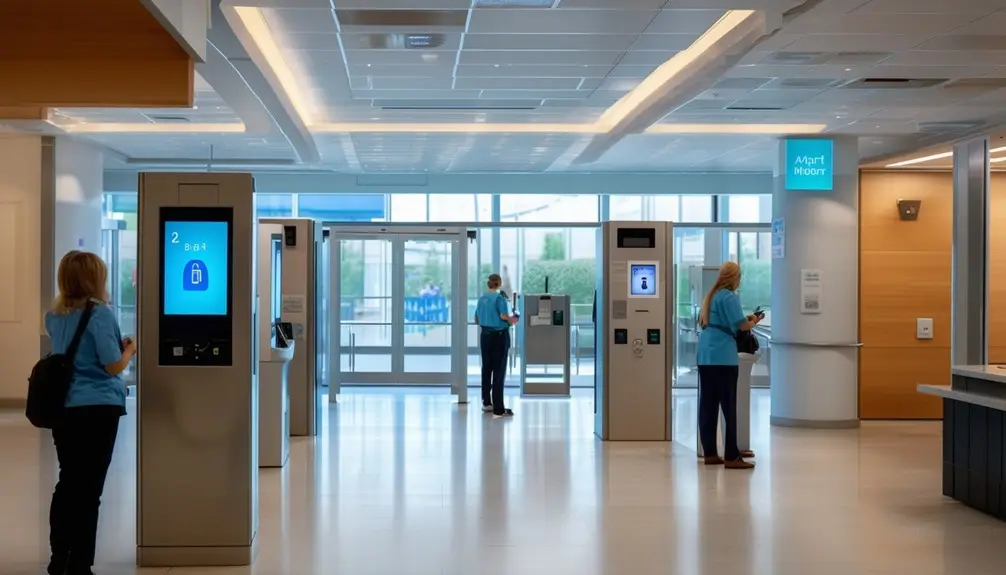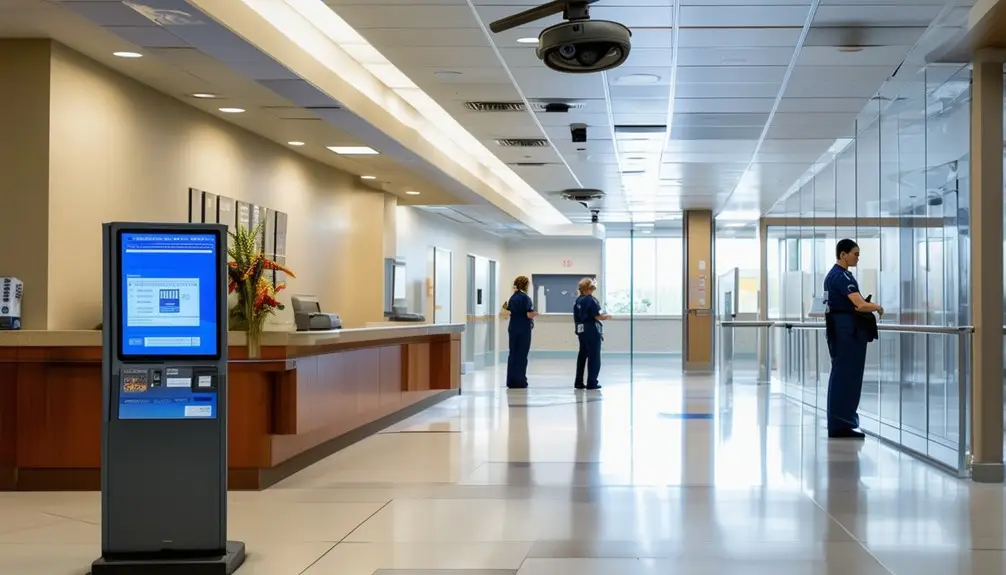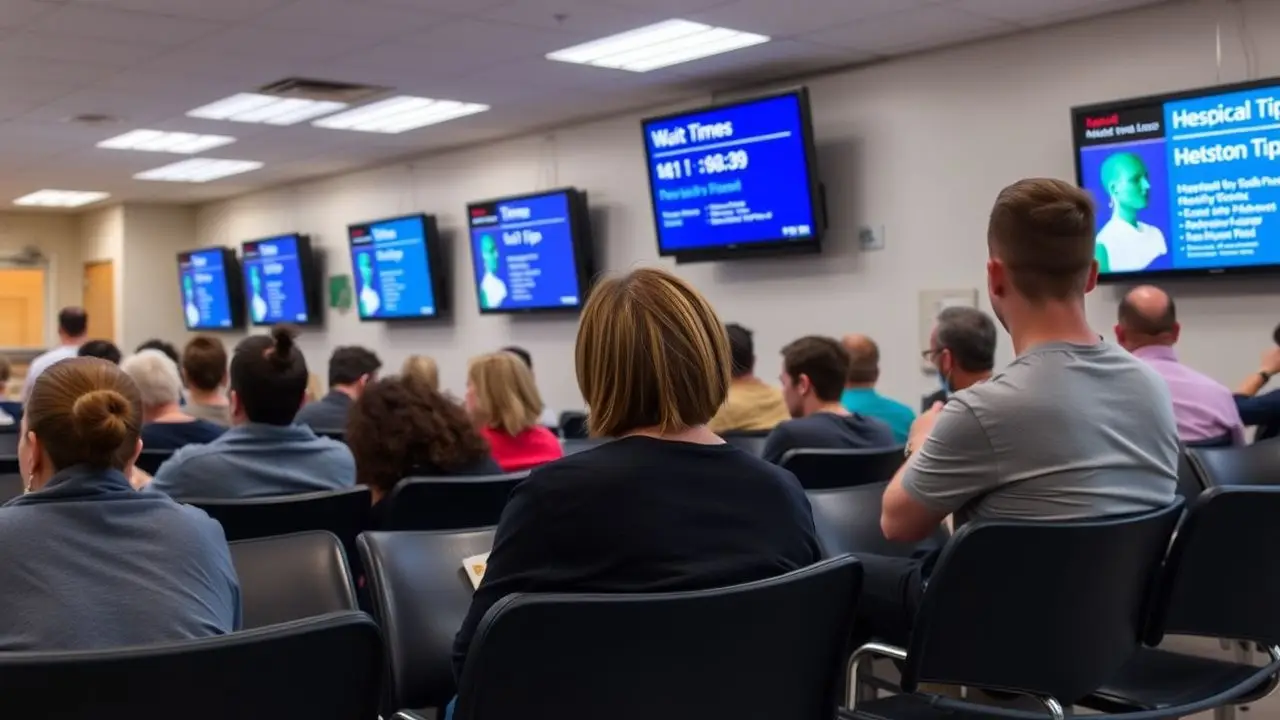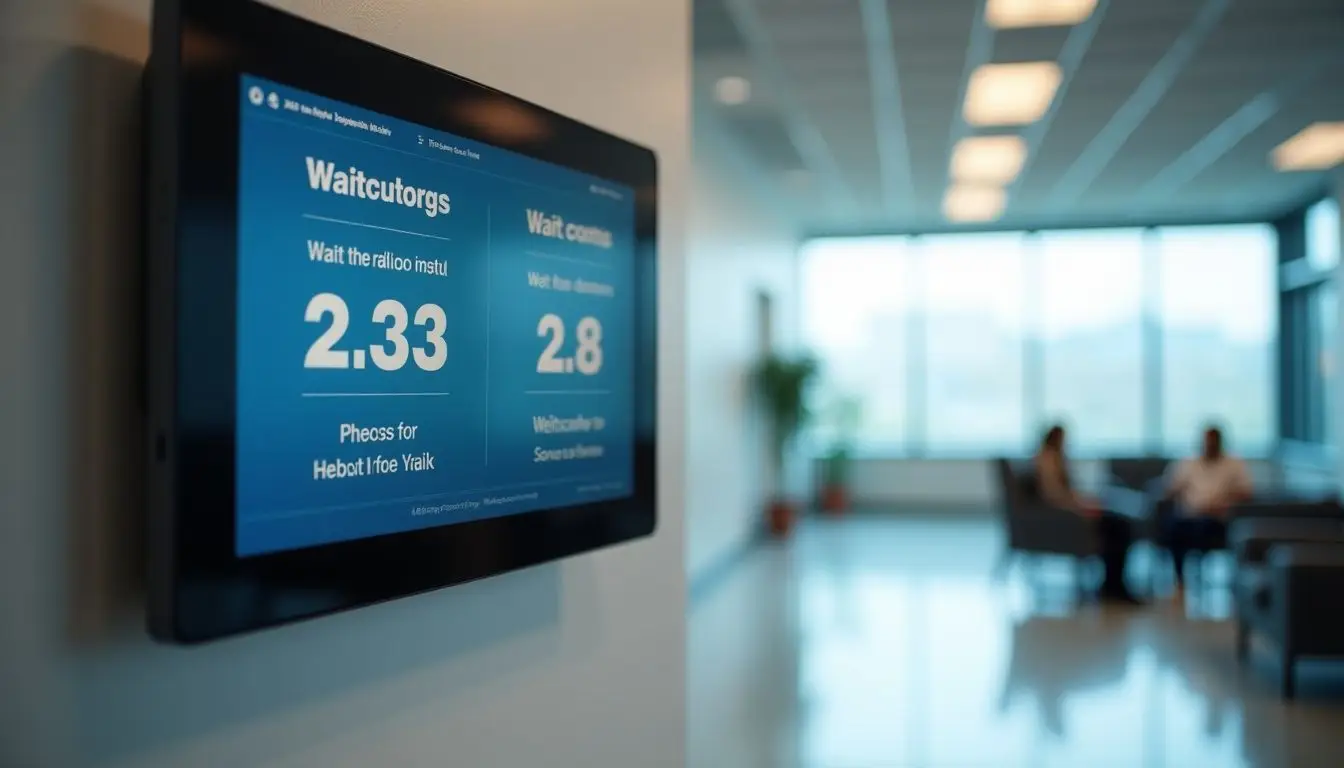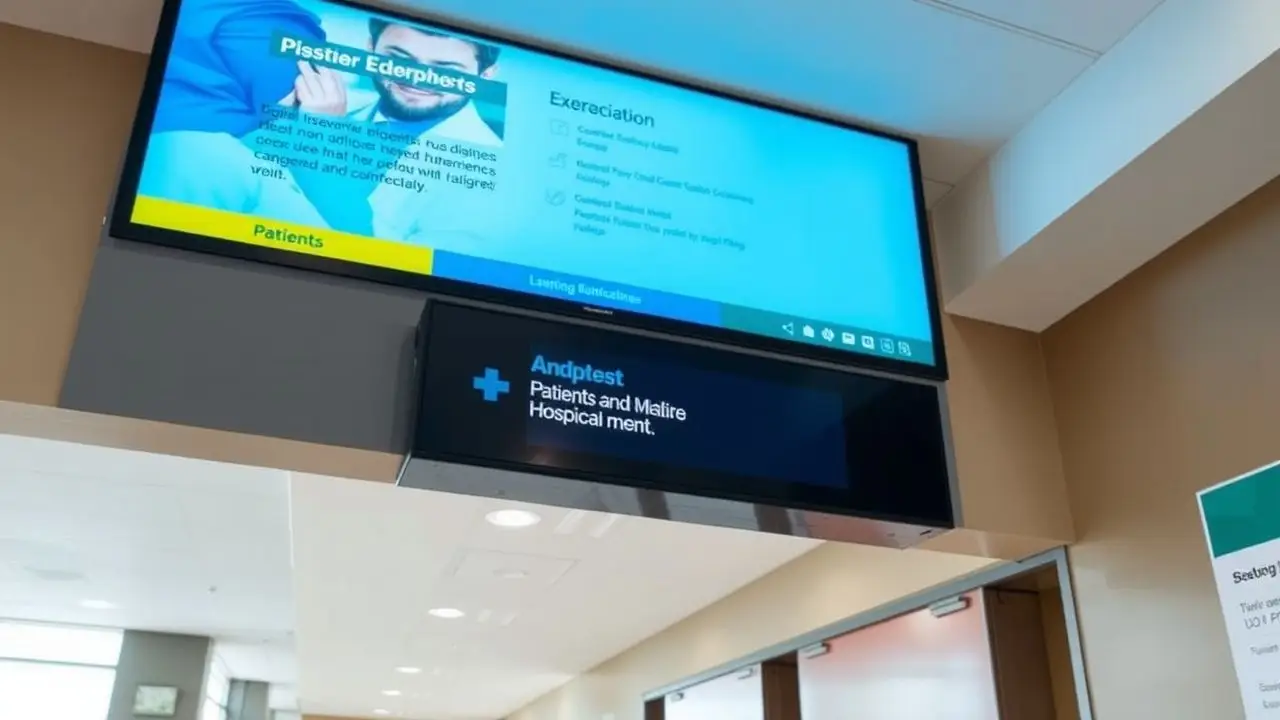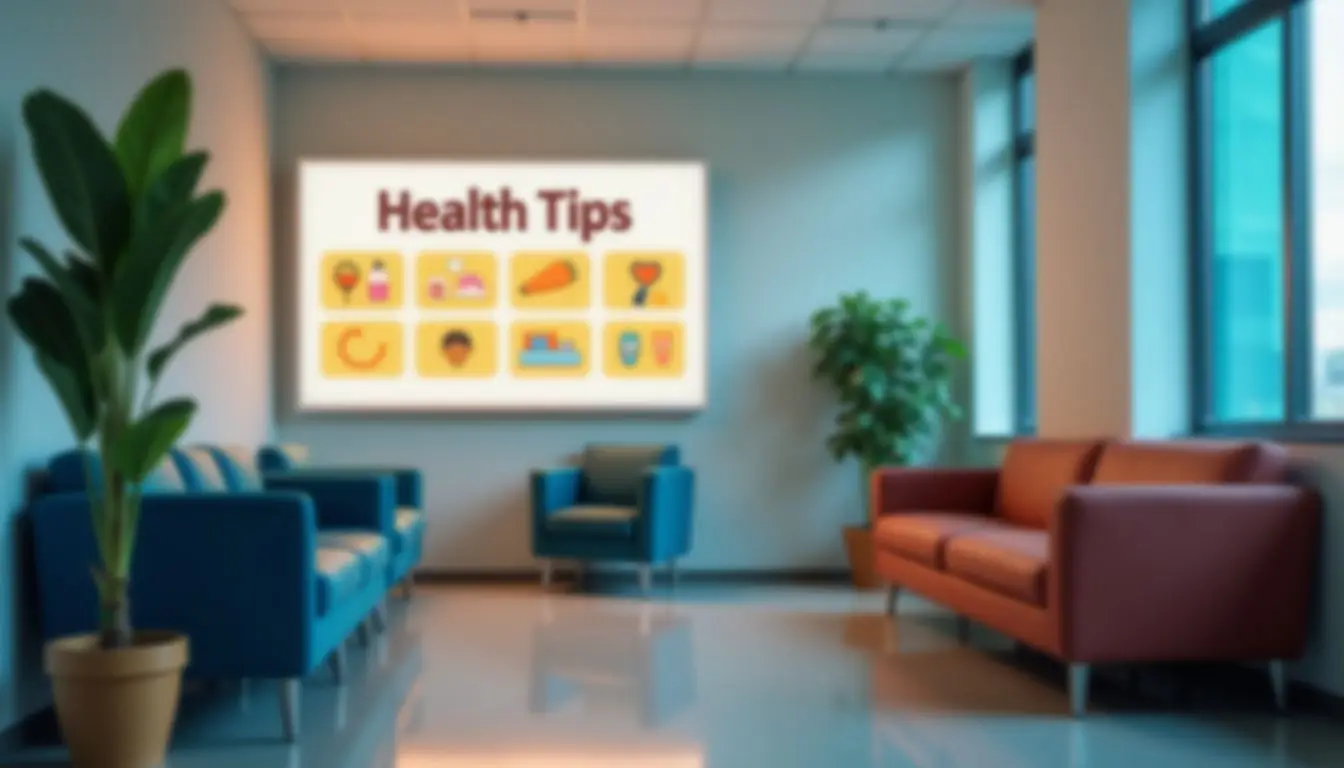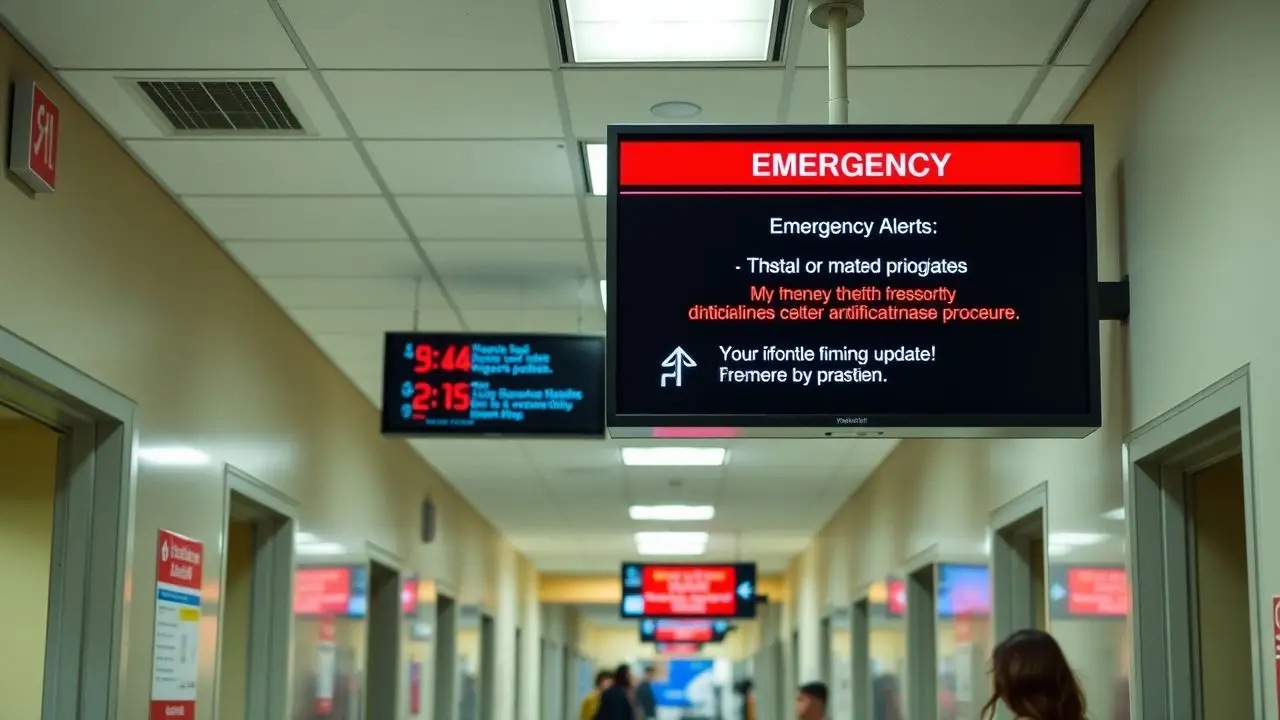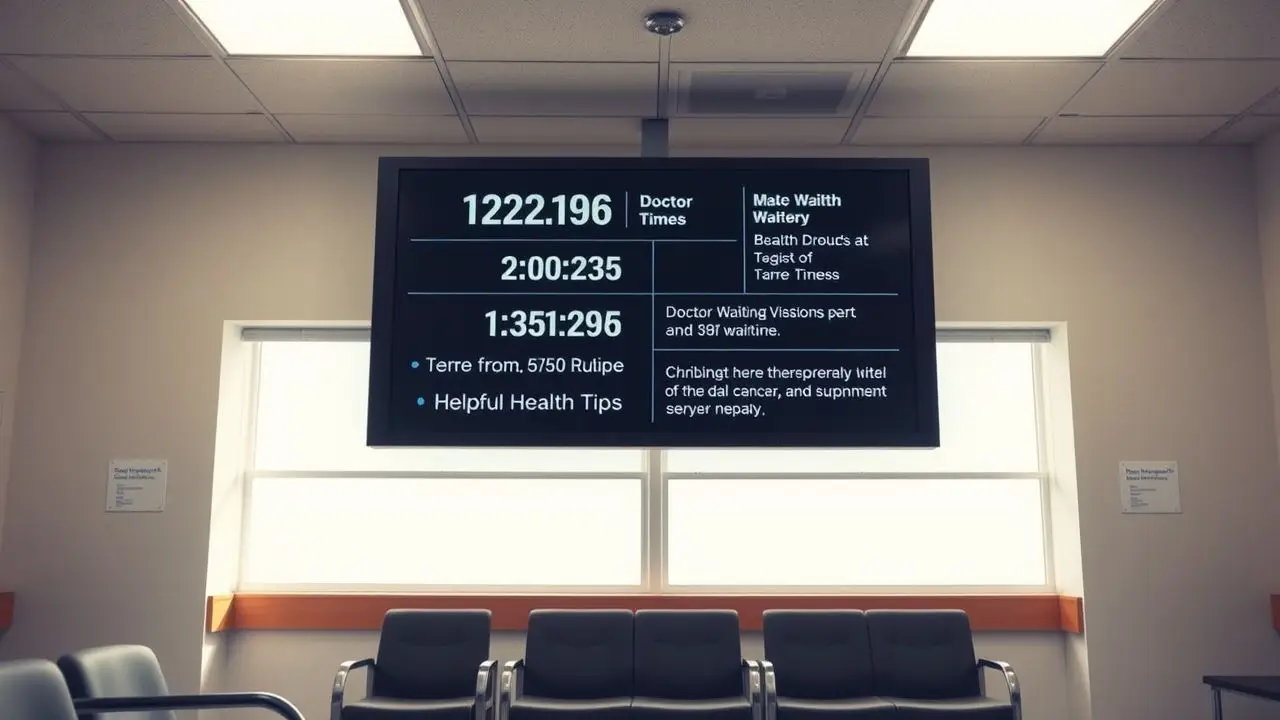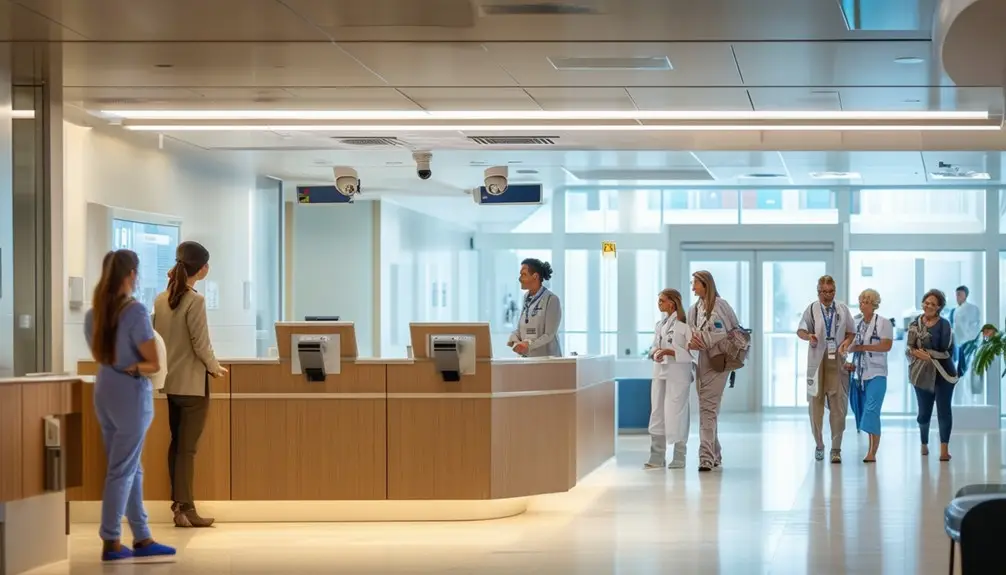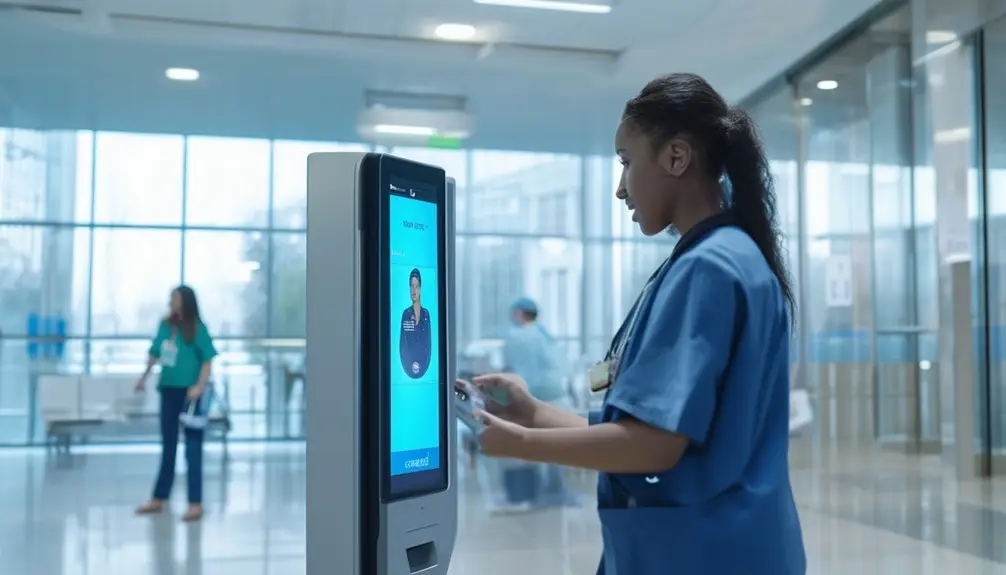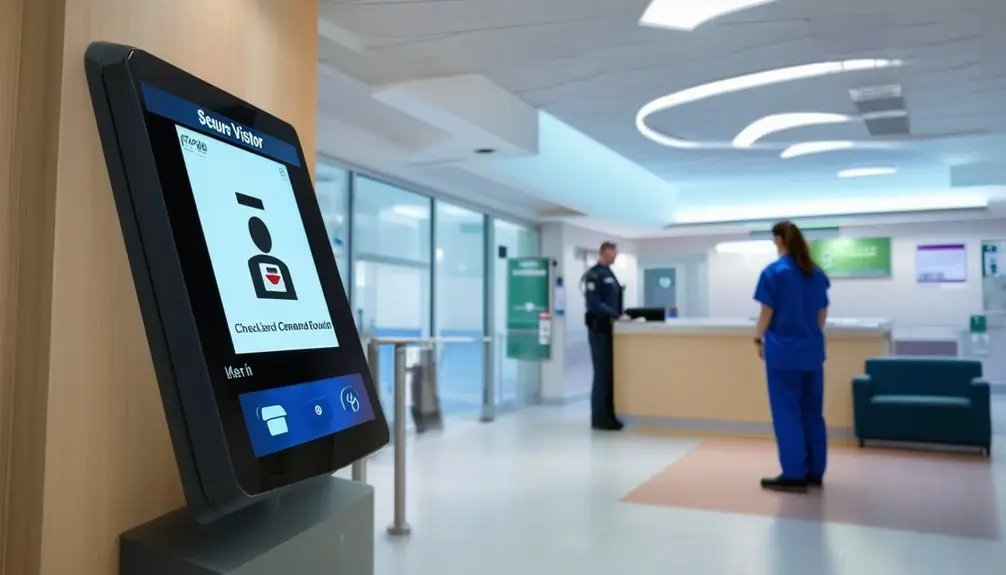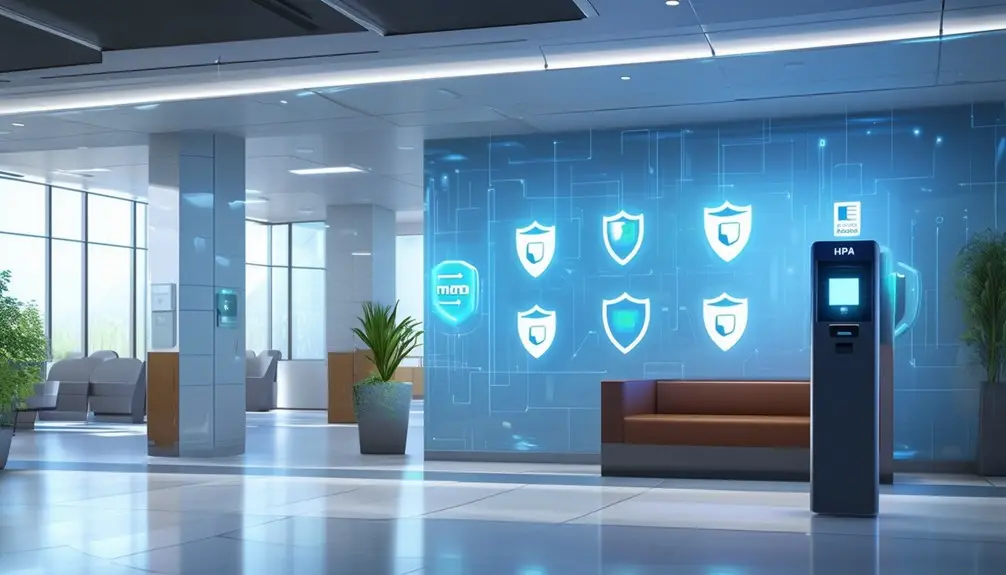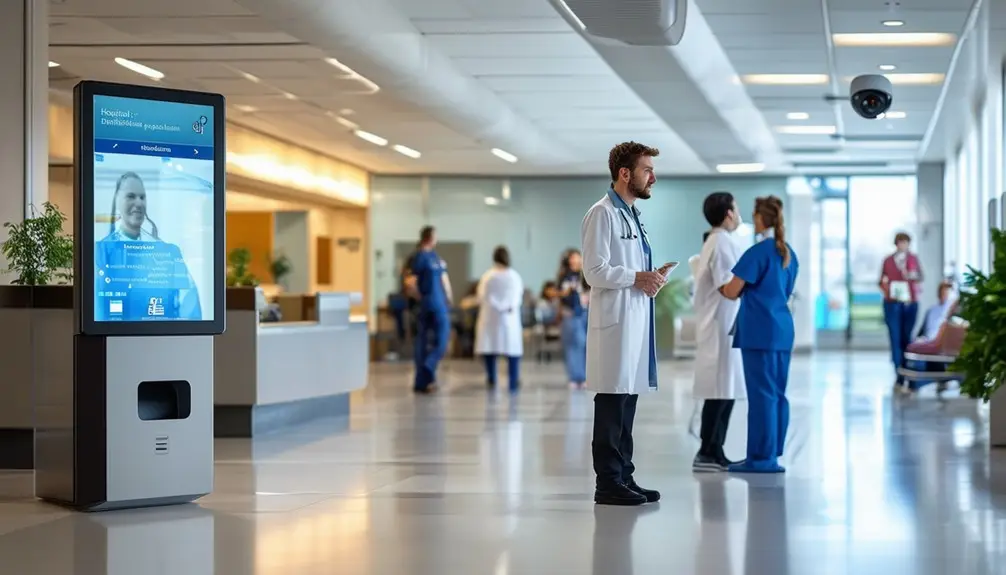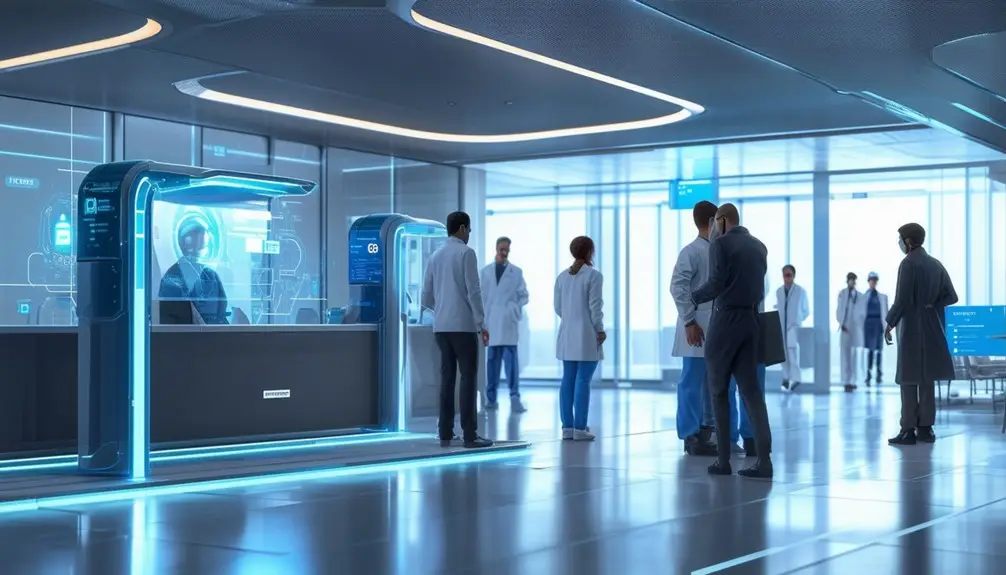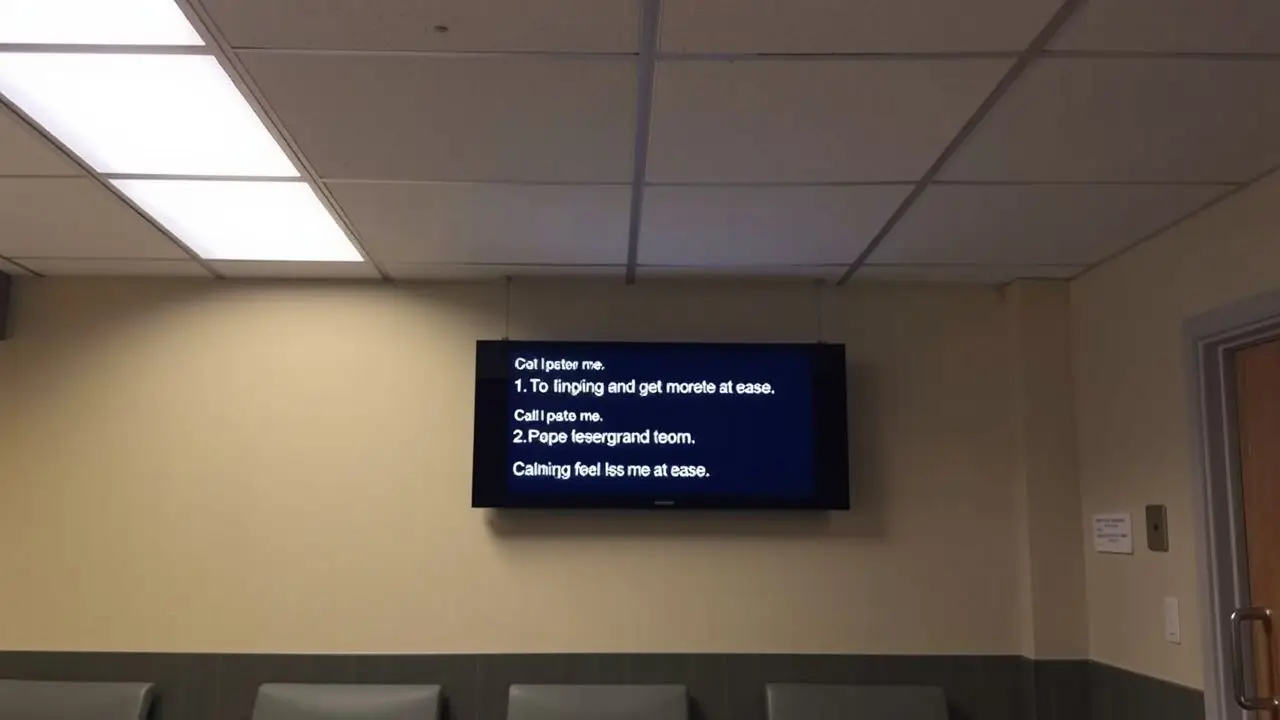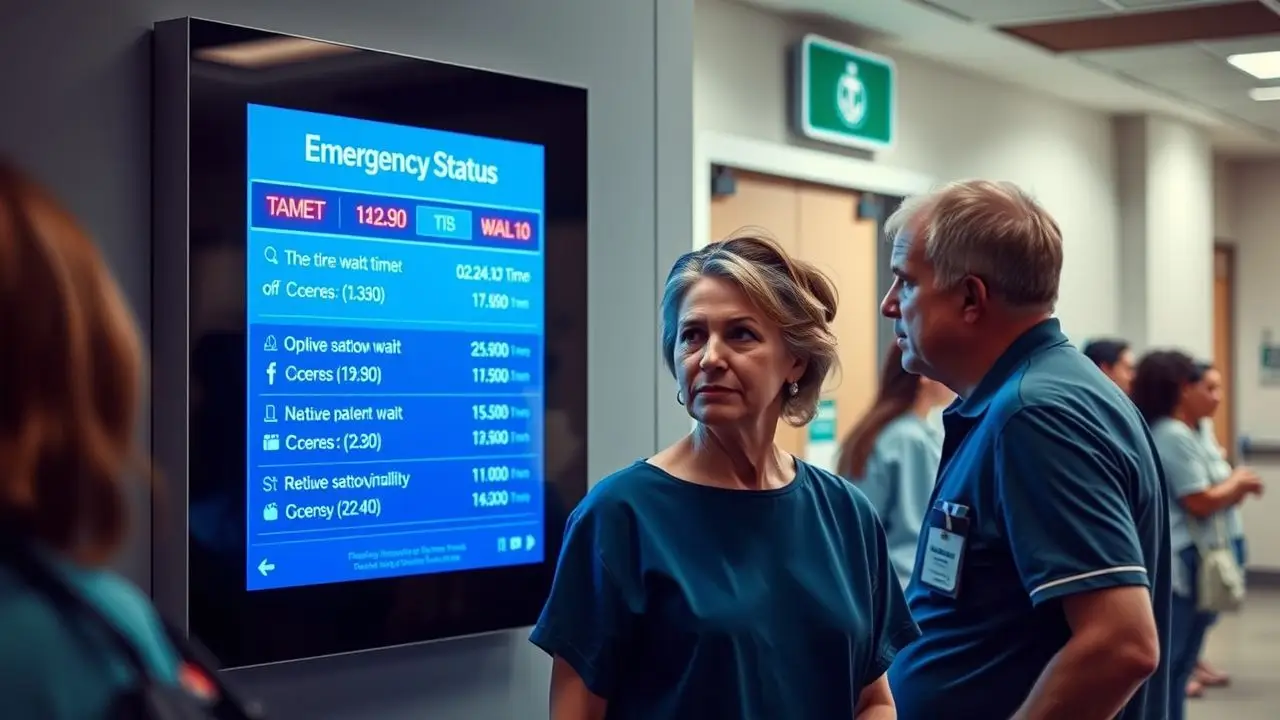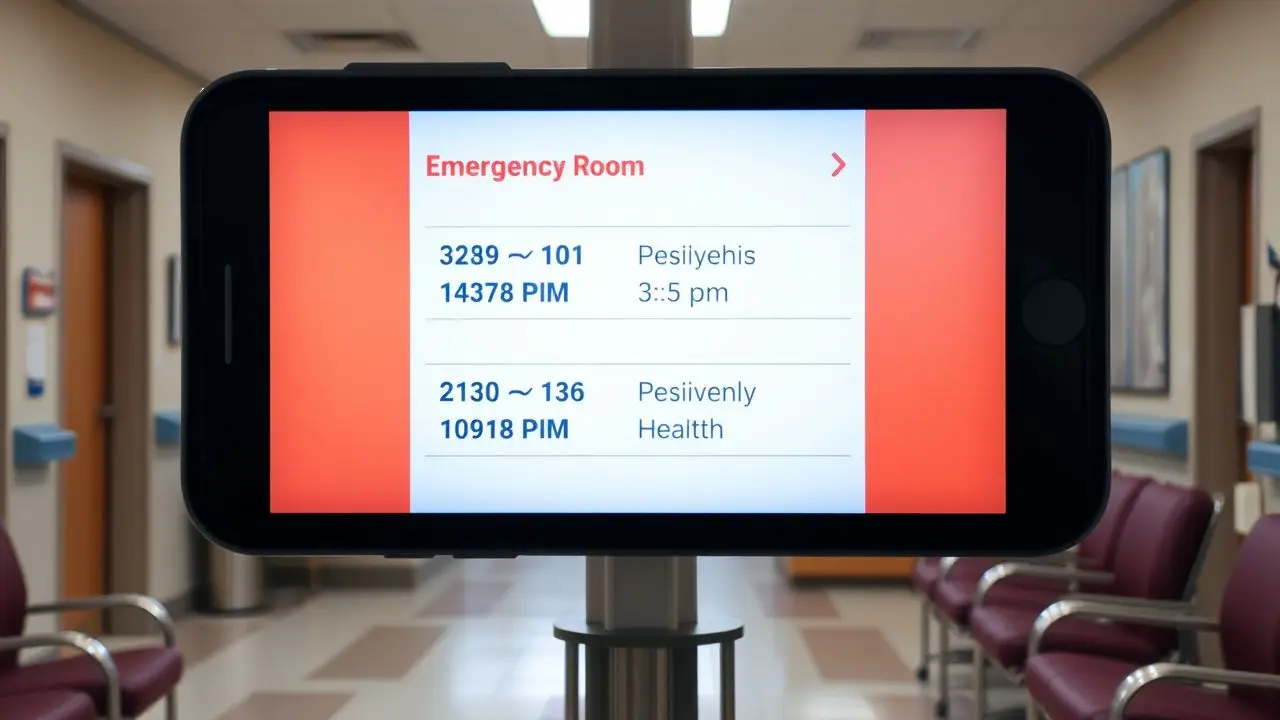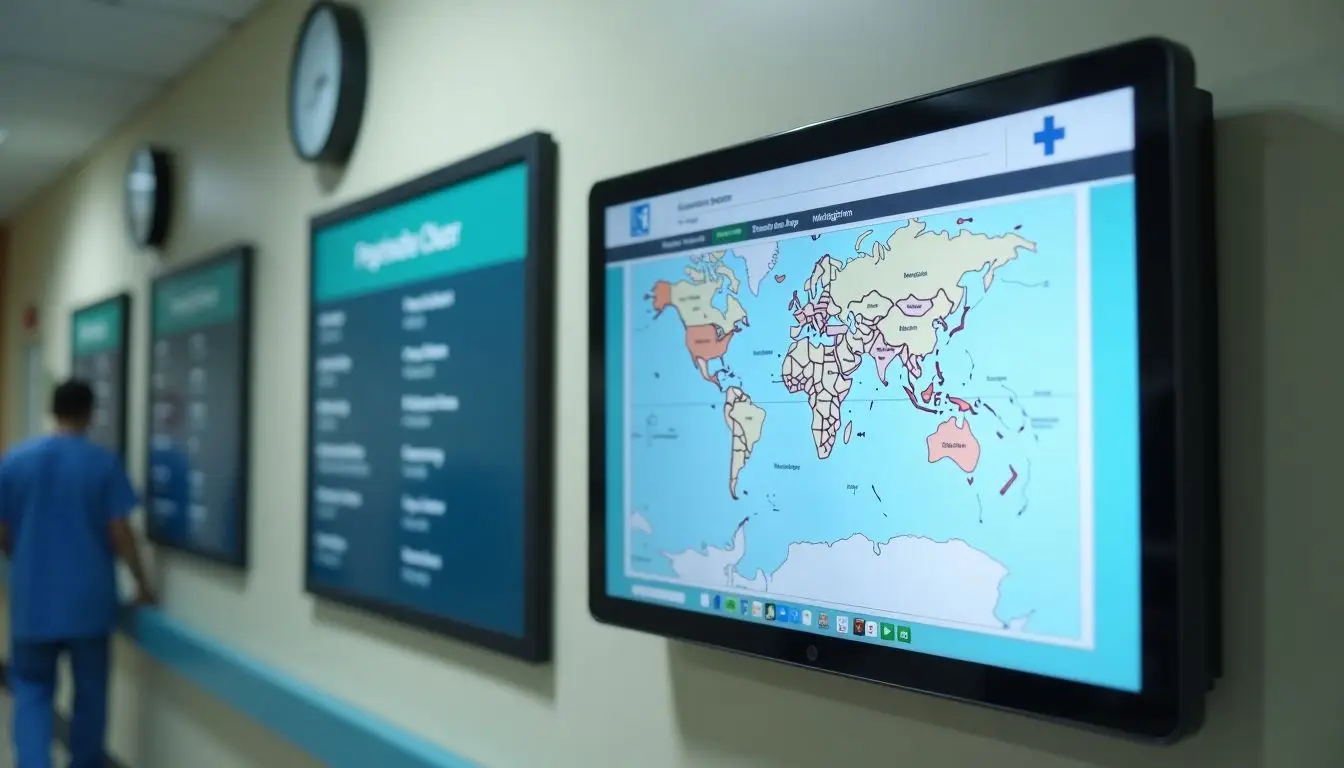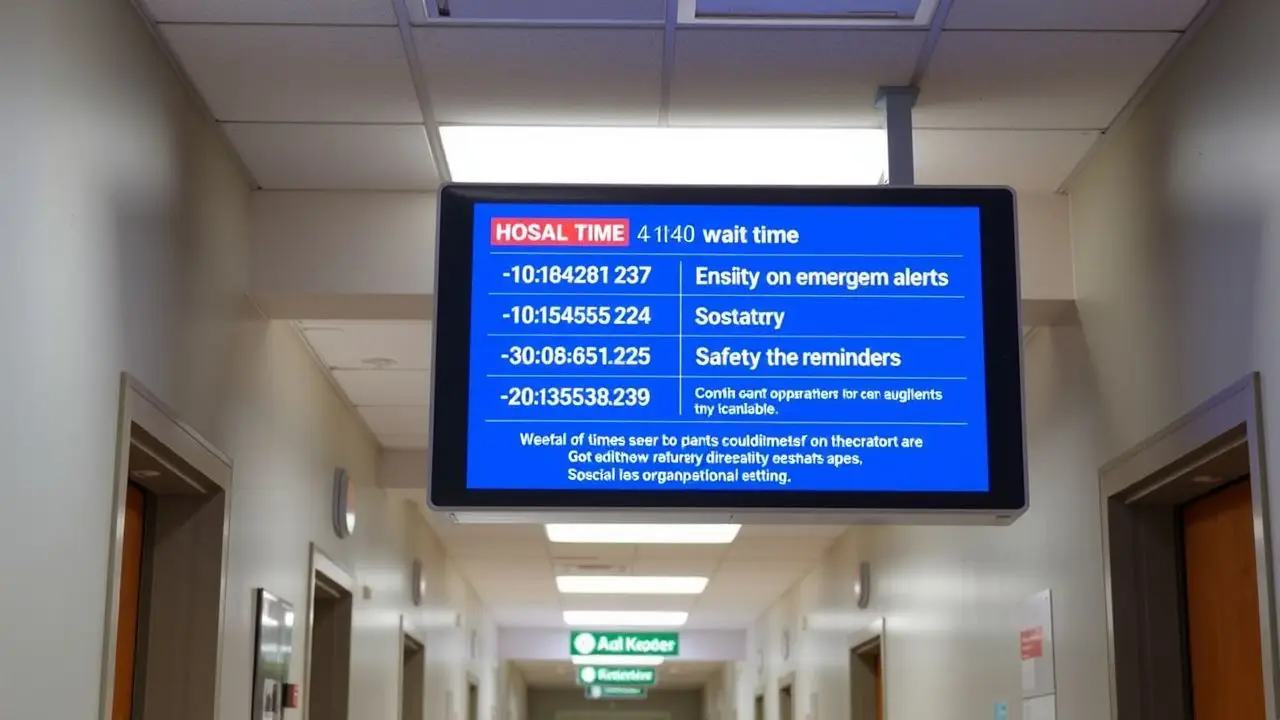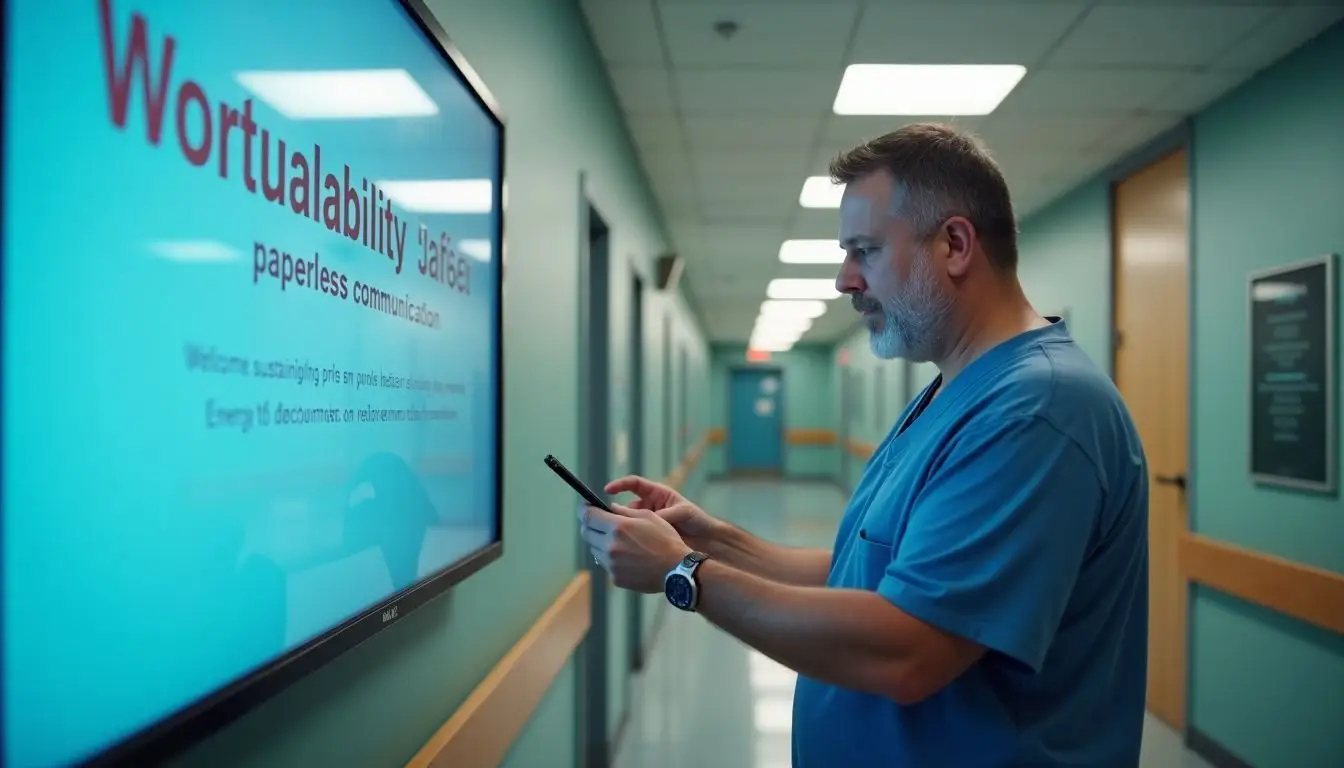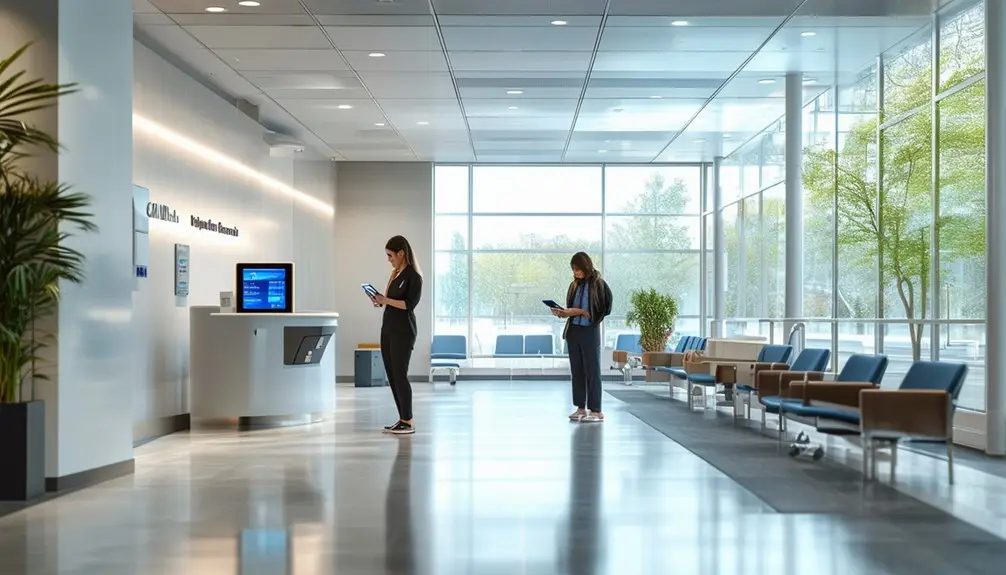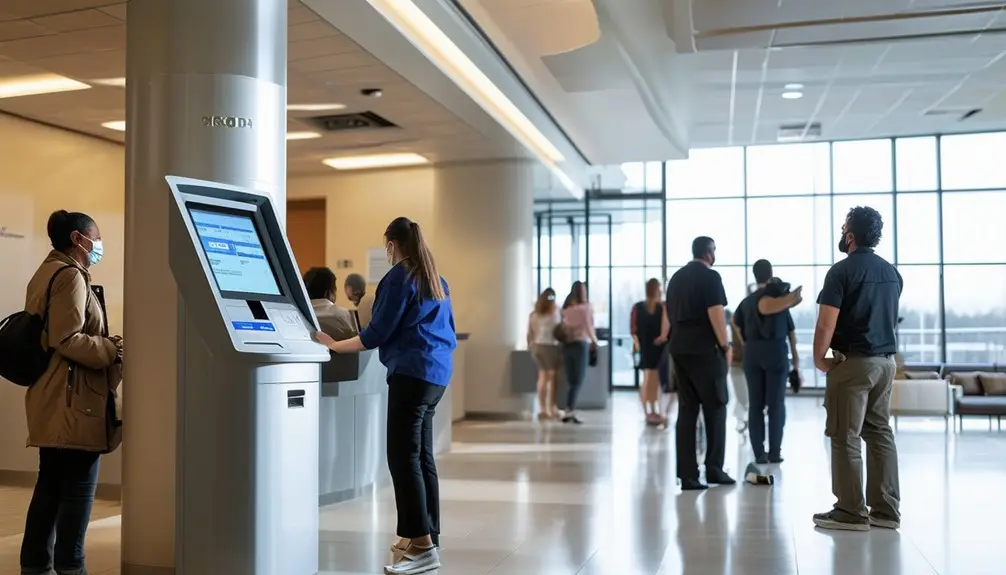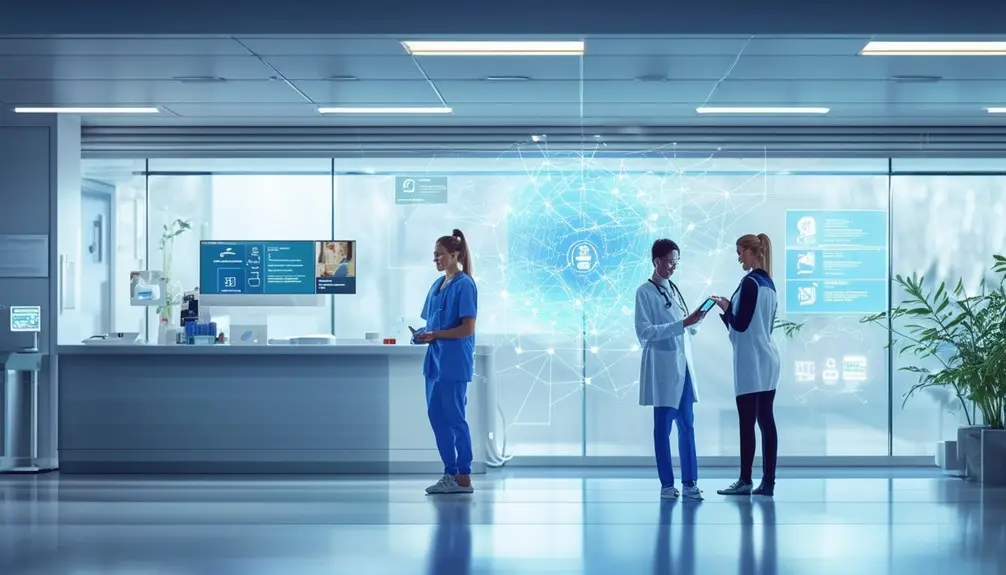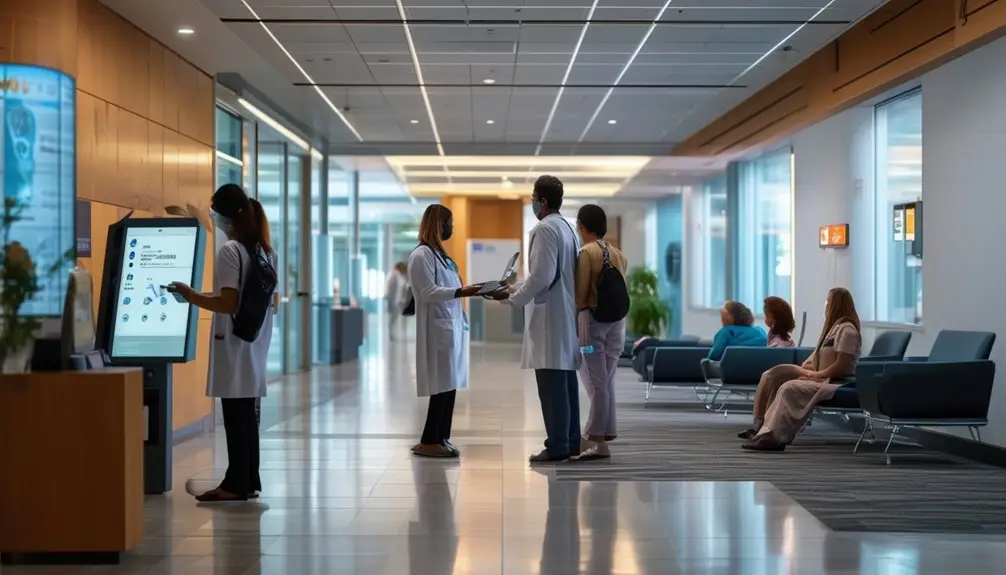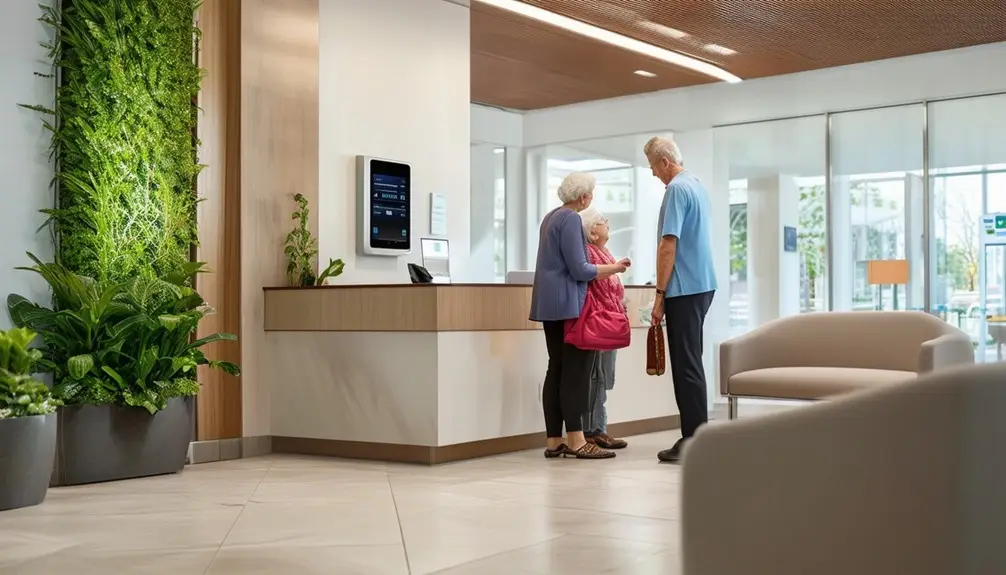To safeguard visitor management in healthcare, adopt digital systems that guarantee real-time data collection and regulatory compliance. Use advanced technologies like pre-screening and temperature checks to mitigate COVID-19 risks. Implement QR code check-ins for streamlined processes and badge printing for clear identification. Enhance safety with ID scanning and maintain confidentiality with robust data encryption (TLS 1.2 and 256-Bit AES). Integrate these systems to comply with HIPAA standards and create watchlists for managing potential risks. Educate staff on these tools and you'll be well-equipped to handle security challenges. Discover more about improving your facility's visitor management strategy further.
Key Takeaways
- Digital systems provide real-time visitor data and enhance regulatory compliance.
- QR code check-ins streamline processes and reduce wait times.
- ID scanning technology ensures accurate visitor identification and access control.
- Visitor badges offer immediate visual verification and security details.
- Advanced encryption protects visitor data and ensures HIPAA compliance.
Hospital Security Trends
How have hospital security trends evolved to address increasing challenges in maintaining safety and compliance? Hospital security has become more intricate, as shown by the ASHE 2018 Hospital Security Survey, which indicates an 82% rise in challenges over the past two years. To guarantee hospital safety, many facilities are shifting from outdated paper logbooks to advanced digital visitor management systems. Currently, only 42% of hospitals utilize these digital systems, but the trend is growing.
You must understand that effective hospital security involves more than just controlling access. A digital visitor management system can streamline the process, providing real-time data and better compliance with regulatory standards. These systems can integrate with other security measures, such as pre-screening and temperature scanning, to create a secure environment where staff can focus on delivering top-notch patient care.
COVID Visitor Restrictions
COVID-19 required strict visitor restrictions in hospitals, prompting the adoption of advanced visitor management systems to enhance safety and adherence. Implementing visitor management technology allows hospitals to efficiently pre-screen visitors, conduct temperature checks, and guarantee digital check-outs. These measures are vital for mitigating the risk of virus transmission within healthcare facilities.
By integrating robust visitor management technology, hospitals can adapt swiftly to the evolving challenges posed by COVID-19. Pre-screening tools enable you to verify visitor health status before they enter the facility, thereby ensuring that only those who meet safety criteria gain access. Temperature scanning adds an additional layer of security by identifying potential symptoms early.
Digital check-out features streamline the process of tracking visitor movements, ensuring that visitor data is accurately logged and easily retrievable. This facilitates effective contact tracing, should an outbreak occur. Additionally, these systems reduce the need for physical interactions, aligning with social distancing protocols.
Adopting these technologies not only enhances patient and staff safety but also guarantees compliance with regulatory standards. By leveraging advanced visitor management solutions, you can create a secure environment that meets the demands of the current healthcare landscape, minimizing potential risks and maintaining operational efficiency.
Visitor Check-In Process
For an efficient visitor check-in process, you can utilize QR code scanning or allow manual information entry, which streamlines the procedure. Instant badge printing, complete with visitor photos and customizable details, guarantees robust security and clear identification. This process, paired with seamless check-out via QR codes, mitigates risks and enhances compliance.
QR Code Check-In
By leveraging QR code technology, hospitals can streamline the visitor check-in process, ensuring both efficiency and enhanced security. When a visitor arrives, they simply scan a QR code displayed at the entrance, which directs them to a secure digital form to input their information. This reduces manual entry errors and speeds up data collection, enhancing overall visitor management.
Using QR code technology for check-ins offers several benefits:
- Importance: Visitors can quickly scan and fill out information, reducing wait times and congestion in hospital lobbies.
- Precision: Digital entry minimizes the risk of human error compared to manual logs, ensuring accurate data collection.
- Access Control: The QR code system integrates with hospital security protocols, granting or restricting access based on predefined criteria.
From a compliance perspective, QR code check-ins support robust data management practices, ensuring that visitor information is securely stored and easily retrievable. This is vital for adhering to healthcare regulations like HIPAA, which mandate strict data protection and privacy standards. Additionally, QR code check-ins facilitate risk mitigation by providing real-time data on visitor whereabouts, enabling hospitals to respond swiftly to emergencies. By incorporating QR codes into visitor management, hospitals not only improve operational efficiency but also bolster security and regulatory compliance.
Instant Badge Printing
Enhancing the visitor check-in process further, hospitals can implement instant badge printing to bolster security and streamline visitor management. By incorporating badge printing, hospitals can create badges that feature visitor photos, custom details, and company logos, ensuring clear identification at all times. This approach not only simplifies the visitor management process but also enhances security by providing immediate visual verification of all visitors.
Moreover, instant badge printing allows hospitals to track visitor presence within the facility accurately. When visitors check in, their information is logged digitally, and the printed badge includes a QR code. This QR code facilitates a seamless check-out process, ensuring that the hospital maintains an accurate log of who is in the building at any given time.
Manual Information Entry
To warrant compliance and reduce risks, manual information entry during the visitor check-in process necessitates visitors to accurately input their personal details into the hospital's digital system. This method enhances the overall visitor management system by replacing outdated paper logbooks with a streamlined digital approach. When visitors manually input their information, it guarantees that all data is accurate and up-to-date, contributing to a secure and efficient environment.
Manual information entry offers several advantages:
- Accurate Data Collection: By inputting their details manually, visitors guarantee that the information is correct, reducing the chances of errors that can occur with handwritten logs.
- Enhanced Security: Accurate data entry enables hospitals to keep a precise record of who is on the premises, which is essential for maintaining security and managing emergency situations.
- Compliance with Regulations: Digital systems facilitate adherence to healthcare regulations by securely storing visitor information and making it easily accessible for audits or reviews.
Incorporating manual information entry into the visitor management system not only reduces risks but also improves operational efficiency. Visitors can be quickly identified through the instant badge printing feature, which includes their photo, custom details, and company logo. This approach enhances security and ensures a seamless check-in process in healthcare settings.
ID Scanning
When you implement ID scanning technology, you guarantee a more efficient check-in process by quickly reading industry-standard PDF417 barcodes on state-issued IDs. This enhances visitor security, as accurate identification provides secure access control to hospital premises. Additionally, it helps maintain data integrity and confidentiality, strengthening cybersecurity measures for visitor information.
Efficient Check-In Process
Implementing ID scanning for visitor check-ins in hospitals guarantees precise identification and expedites the entire check-in process. By efficiently reading industry-standard PDF417 barcodes on state-issued IDs, you can establish a secure environment for patients and staff. This technology enhances security and visitor management, streamlining the process while reducing the risk of unauthorized access.
ID scanning provides several benefits that contribute to a more secure environment:
- Accurate Identification: Scanning IDs improves the accuracy of visitor records, ensuring that only verified individuals gain access.
- Speedy Check-In: The process is expedited, reducing wait times and enhancing the overall visitor experience, thus maintaining a smooth operational flow.
- Enhanced Security: By verifying the identity of each visitor, you can implement robust access control measures that protect sensitive areas and maintain compliance with healthcare regulations.
This process not only improves the security of the hospital but also ensures compliance with various regulatory requirements. By adopting ID scanning technology, you mitigate risks associated with manual entry errors and unauthorized access. This efficient check-in process ultimately supports a secure, well-managed healthcare environment, fostering trust among patients and staff.
Enhanced Visitor Security
By utilizing ID scanning technology, hospitals can greatly strengthen visitor security and adhere to strict healthcare regulations. ID scanning efficiently scans the industry-standard PDF417 barcode on state-issued IDs, confirming that each visitor is accurately identified. This not only expedites the check-in process but also guarantees that only authorized individuals gain entry to hospital premises, a crucial aspect of effective access management.
With advanced visitor management solutions incorporating ID scanning, hospitals can significantly improve their security measures. The technology secures data integrity and confidentiality, safeguarding sensitive patient and visitor information from unauthorized access. By swiftly and accurately verifying visitors' identities, hospitals can prevent potential security breaches and unauthorized entry, thereby reducing risks associated with unverified individuals entering secure areas.
In addition to enhancing security, ID scanning also aids in compliance with healthcare regulations that enforce strict access control and data protection standards. Integrating ID scanning into your visitor management solutions ensures that your hospital meets these regulatory requirements while upholding a safe environment for patients, staff, and visitors alike. To sum up, ID scanning is a potent tool for boosting visitor security, streamlining access management, and maintaining regulatory compliance in healthcare settings.
Visitor Badges
Visitor passes, instantly generated with images, emblems, and personalized fields, are essential for visibly recognizing authorized guests in hospital settings. These passes play a pivotal role in enhancing security by guaranteeing that only those with valid reasons to be on the premises can gain access. They not only aid in maintaining a secure environment but also uphold compliance with healthcare regulations.
Here's how visitor passes contribute to security and efficient guest management:
- Immediate Identification: With images and emblems, staff can quickly verify the identity of guests, reducing the risk of unauthorized access.
- Personalized Fields: Tailored fields allow hospitals to include specific security details, such as visit purpose or department access, enhancing control.
- Brand Consistency: Customizable designs ensure passes align with hospital branding, promoting a professional and cohesive look.
Watchlists
Maintaining a secure environment in healthcare settings also involves using watchlists to identify and manage potential risks among visitors. By implementing internal watchlists and conducting instant background checks, you can proactively detect and mitigate threats. This process is essential for maintaining the safety of both patients and staff.
When a visitor's information is matched against a watchlist, you receive instant alerts for flagged individuals. This immediate notification system allows you to take swift action, preventing potential security breaches. The integration of watchlists with your visitor management system enhances your facility's threat detection capabilities, ensuring that only those who pose no risk are granted access.
Background checks play a significant role in this security framework. By running these checks instantly, you can verify the credentials and histories of visitors in real-time. This not only deters individuals with questionable backgrounds from entering but also reassures patients and staff that security is a top priority.
Incorporating watchlists and background checks into your visitor management protocol is a compliance-focused approach to risk mitigation. It ensures that potential threats are identified and addressed promptly, thereby creating a safer and more secure healthcare environment.
HIPAA Compliance
To guarantee data protection and mitigate privacy risks, you must adhere to HIPAA compliance measures. This includes using secure visitor management systems that safeguard PHI through encryption and access controls. By meeting legal compliance standards, you minimize the risk of data breaches and uphold patient confidentiality.
Ensuring Data Protection
In the field of healthcare, safeguarding patient information hinges heavily on robust data encryption protocols like TLS 1.2 and 256-Bit AES. When you're implementing a visitor management system, guaranteeing HIPAA compliance is paramount to protect patient data. Encryption plays a critical role in this process by securing sensitive information from unauthorized access and maintaining its confidentiality and integrity.
HIPAA compliance mandates multiple layers of security, and encryption is central to these efforts. By integrating TLS 1.2 and 256-Bit AES encryption into your visitor management system, you can mitigate risks such as data breaches and privacy violations. Here's how encryption helps:
- Data Transmission Security: TLS 1.2 guarantees that data transmitted between systems is encrypted, preventing interception by unauthorized parties.
- Data Storage Protection: 256-Bit AES encryption secures stored data, making it nearly impossible for hackers to decipher the information even if they gain access.
- Compliance Assurance: Using these encryption standards demonstrates adherence to HIPAA regulations, guaranteeing that your healthcare facility remains legally compliant and patient data remains protected.
Mitigating Privacy Risks
Implementing a HIPAA-compliant visitor management system is vital in reducing privacy risks and protecting patient data. As a healthcare provider, you face stringent regulations to guarantee the confidentiality of protected health information (PHI). A secure visitor management system helps you meet these requirements by encrypting data with TLS 1.2 and 256-Bit AES. This encryption ensures that any information collected from visitors is safeguarded against unauthorized access.
By choosing a HIPAA-certified system, you can guarantee that all visitor interactions, sign-ins, and data entries are handled in compliance with federal regulations. This means that every piece of PHI is only accessible to authorized personnel, minimizing the risk of data breaches and privacy violations. Additionally, these systems are designed to maintain a detailed log of all visitor activities, providing an audit trail that is essential for compliance and risk assessment.
Incorporating a secure visitor management system not only protects patient data but also enhances the overall security of your healthcare facility. By proactively addressing privacy risks, you create a safer environment for both patients and staff, ensuring that sensitive information remains confidential and secure.
Legal Compliance Measures
Adhering to HIPAA compliance measures is essential for safeguarding the security and integrity of patient data in healthcare settings. In the context of Visitor Management for Hospitals, HIPAA compliance isn't just a regulatory requirement; it's a critical component for maintaining trust and protecting patient privacy. By implementing these measures, you can significantly reduce risks associated with data breaches and unauthorized access.
To safeguard your visitor management system is HIPAA compliant, focus on the following:
- Encryption Protocols: Utilize TLS 1.2 and 256-Bit AES encryption to secure data transmission and storage, ensuring that all patient information remains confidential and protected.
- Access Controls: Implement strict access controls to restrict who can view or modify sensitive data. This includes role-based access, multi-factor authentication (MFA), and regular audits to monitor access patterns.
- Data Integrity: Maintain that your systems uphold data integrity through continuous monitoring and regular updates. This helps in identifying and mitigating potential vulnerabilities before they can be exploited.
Data Encryption
Every piece of data transferred and stored in healthcare visitor management systems is encrypted using TLS 1.2 and 256-Bit AES, guaranteeing robust protection against unauthorized access. Data encryption is critical in enhancing cybersecurity measures within hospitals. By utilizing these advanced encryption protocols, you effectively shield sensitive information from potential breaches.
TLS 1.2 guarantees that data in transit remains secure, while 256-Bit AES encryption protects stored data, maintaining its integrity and confidentiality. This dual-layered approach addresses both data transmission and storage, minimizing the risk of cyber threats. It's not just about keeping the bad actors out; it's about ensuring that the data you handle remains uncompromised throughout its lifecycle.
Additionally, employing these encryption standards helps you meet stringent regulatory requirements, including HIPAA compliance. By safeguarding patient information through robust encryption, you mitigate the risk of legal repercussions and potential financial penalties. This level of data protection is essential for maintaining trust with patients and securing the operational integrity of your healthcare facility.
Incorporating these encryption protocols into your visitor management system demonstrates a proactive approach to cybersecurity and risk mitigation. It's a critical step in guaranteeing that sensitive visitor and patient data is always secure, compliant, and protected from unauthorized access.
Best Practices
To enhance the security and efficiency of your healthcare facility, adopting digital visitor management systems with QR code scanning and ID verification is necessary. The ASHE 2018 Hospital Security Survey indicates that security maintenance has become 82% more challenging over the past two years, making the shift to digital visitor management software essential. Here are some best practices to keep in mind:
- Implement QR Code Scanning: Utilize QR code technology for visitor check-ins to streamline the process and reduce manual entry errors. This method also allows for instant badge printing, making sure that every visitor is easily identifiable within your facility.
- Leverage ID Verification Technology: Use ID scanning technology to quickly read state-issued IDs. This guarantees accurate visitor identification, which is vital for maintaining secure access control and compliance with regulatory standards.
- Educate Staff on System Use: Ensure that your staff is adequately trained on using the visitor management software. Effective training minimizes errors and enhances the overall security posture of your facility.
Vendor Access Management
Ensuring robust vendor access management is fundamental for safeguarding healthcare facilities and maintaining regulatory compliance. You need visibility into vendors' credentials and activities to guarantee compliance and reduce risk. This transparency is not just about knowing who is entering your facility but also about verifying that they meet all required standards.
Managing vendor relationships is essential for maintaining accreditation and regulatory compliance. A flexible vendor credentialing system is necessary. These systems allow you to effectively screen and authorize vendors, guaranteeing they have the appropriate qualifications and certifications. Inclusive visitor access software extends beyond the health system walls, enabling you to manage vendor access seamlessly.
Efficient vendor access management helps protect staff, patients, and facility security. It minimizes the risk of unauthorized access, which could lead to potential breaches or non-compliance issues. By integrating thorough vendor access management protocols, you ensure that only qualified and vetted vendors interact with your healthcare environment.
Frequently Asked Questions
What Is the Security Visitor Management System?
A security visitor management system tracks and monitors visitor presence, verifies identities, and enforces restrictions. You'll use digital check-ins, ID scanning, and instant badge printing to guarantee a safe environment, mitigating risks for everyone involved.
What Are the Different Types of Visitor Management Systems?
You'll find various visitor management systems, including paper logbooks, digital systems, and hybrid solutions. Digital systems offer pre-screening, temperature checks, room capacity management, and ID scanning to enhance compliance and mitigate security risks effectively.
What Is an Example of Visitor Management?
Think of visitor management as a gatekeeper; when you use a digital check-in system that scans IDs and prints badges, you're not only streamlining entry but also ensuring compliance and mitigating security risks effectively.
How Do Hospitals Keep Track of Visitors?
You'll find that hospitals use digital visitor management systems with pre-screening, QR code check-ins, and ID scanning. They print badges with photos and logos, perform instant background checks, and maintain watchlists to enhance security and compliance.
Conclusion
By implementing secure visitor management systems in healthcare, you're guaranteeing a safer environment for patients and staff. Did you know that 92% of hospitals reported improved security after adopting visitor management solutions? Emphasizing ID scanning and visitor badges not only enhances security but also guarantees HIPAA compliance. Encrypting data protects sensitive information from breaches. Adopting these best practices and managing vendor access effectively minimizes risks and aligns with regulatory standards, safeguarding your healthcare facility.
